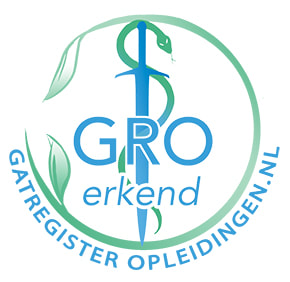Black and white thinking limits our perception.Knowledge and theories play important roles regardless of our job and field. But as 'Intelligent' evolved beings we are also good at overdoing it, meaning we put more effort into our thoughts than into our actions. We often mean well, but lack the motivation, peers, teachers or environment to help us grow or change tactics. So we keep sticking to our black-and-white perceptions, never taking a step outside the box. But the one thing horses often ask from us, is to step outside and destroy the box because this particular case and horse needs a whole other approach. But if we're only comfortable with doing what we've always done, our methods will start to atrophy. Comfort only takes you so far. We become blind to the slivers of information that horses provide us in those moments in between: The Gray Area, the fundament of exchanging information. 'Before there's fear, there is distrust, then trust Before there is anger, there is hurt, then peace Before the storm came, there was silence and before that, there was play' We often only notice the Black or White, the present or missing element. We let things escalate into a full blown storm, do nothing when there is play and often don't even notice a horse getting quiet. But it is in that silence that we find our answers, the truth we've been looking for that is only perceivable through an attuned mindset.To be aware of what our horse needs and if we can provide exactly that. We not only need to be comfortable with finding and working in the Gray Area, we also need to be comfortable to revisit it frequently. Don't be afraid to work on your fundamentals.
0 Comments
Balance Pad en OefeningenAl heel lang stond er een Balance Pad op mijn lijstje, maar dankzij alle andere (grotere) uitgaven dit jaar stelde ik het steeds verder uit.. tot ik zelf steeds meer klachten kreeg in/rondom mijn rug en benen. Normaalgesproken onderhoud ik mezelf met behulp van Yoga, Tai Chi of dans maar door alle hectiek die de verhuizing en verbouwingen met zich meebracht heb ik dit nogal verwaarloosd en mezelf overvraagd. Dus toen ik toch nieuwsgierig op zoek ging naar een pad voor mezelf, bestelde ik er direct 1 voor de paarden. Via Heart Equine (veterinarian in Texas) vond ik geschikte oefeningen voor zowel Gupsy als Maan; Gupsy heeft ondersteuning nodig in de spieren van zijn thoracic sling en Maan houdt fysiek vast door emotioneel trauma. Voor beiden maakte ik een apart stappenplan, dit is die van Maan: OEFENING *ook geschikt om de thoracic sling te engagen* 1. Introduceren pad: benaderen, aanraken 2. 1 voet op de pad en 1 Minuut wachten / wachten op een Stress Release / wachten tot het paard er zelf af stapt of in slaap valt 3. Halve cirkel stappen, linksom bij linkervoeten en rechtsom bij rechtervoeten 4. Herhalen, eerst de voorhand dan achterhand Observeer of, hoe en wanneer (op de pad? Tijdens de halve cirkel?) je paard spanning loslaat en herhaal deze oefeningen een aantal keren. Maan liet bijvoorbeeld eerst pas los bij het bewegen maar staat inmiddels ook vaak al op de pad te gapen, kauwen en likken of hij valt knikkebollend bijna in slaap. Deze bewustwording vertaalde zich ook naar het opdoen van het deken, waar hij erg gespannen van werd en weer in Freeze/Flight schoot. Na slechts een aantal sessies was er zichtbaar verschil en kon ik Maan rustig zijn regendeken op doen terwijl hij soms zelf, soms met behulp van mij, zijn spanning weer losliet. Een extra oefening (via Charlotte Moore) die ik tijdens de Halve Cirkel inzet is One Step per Second: 1 stap per seconde stappen. Maan rende mij voorheen bijna voorbij, maar beweegt nu relaxed naast mij mee in ritmisch tempo wat zowel emotionele, mentale als fysieke voordelen heeft. Bekijk de visuals hieronder voor extra uitleg van Heart Equine zelf! Gebruik jij Balance Pads voor jezelf of je paard?
Disregulatie Deel 2Vervolg 'Disregulatie 1/1' *deel van serie 'Net als wij mensen kunnen paarden naast emotionele/mentale problemen ook fysieke problemen ondervinden door Disregulatie. De mate van deze problemen is opnieuw afhankelijk van elementen als genen (Nature) en leefomstandigheden (Nurture). Fysieke problemen die voor kunnen komen zijn: - maagzweren, spijsverteringsproblemen - PPID/cushing, Alopecia en meer auto-immuunziekten - huidaandoeningen en ziekten/allergieën - spierverkrampingen - hormonale disbalans/cysten/onvruchtbaarheid - Head Shaking De mentaal/emotionele problemen - of in de volksmond 'Gedragsproblemen' - zijn dus logische en natuurlijke gevolgen van een overprikkeld zenuwstelsel. Zeker ongemak als pijn is een hevige prikkel en houdt de boel in disbalans; sluit daarom altijd pijn als eerste uit. Pain Memories of Pijn Anticipatie is nog een voorbeeld van hoe het paard fysiek in disbalans geraakt en blijft reageren vanuit een grijsgedraaide plaat, zelfs nadat de pijn verholpen is; het is een automatische respons/ beschermingsmechanisme geworden. Dit heeft met Neuroplasticiteit te maken: het grijsgedraaide plaatje = een automatische respons geworden en deze veranderen kost tijd en met name herhaling. Dit wordt in de wereld van Neuroplasticiteit ook wel 'knikkertjes rollen' genoemd. Geef je paard dus de tijd om ongezonde, oude patronen geleidelijk te vervangen door nieuwe, gezonde reacties en help hem hierbij (Co-Regulatie). Lees verder: Disregulatie Deel 3, Interne vs Externe Prikkels
In de afgelopen maanden heb ik een aantal nieuwe aanmeldingen voor (interne) training ontvangen. Helaas heb ik ook eigenaars moeten teleurstellen en uitleggen waarom ik geen 3-jarig paard aanneem om in of door te rijden. Een paard opleiden kost tijd, geld en werk maar vooral: beleid. Beleid om een jong paard de tijd te geven fysiek uit te groeien en mentaal op te groeien. Om niet alleen bereidwillig maar ook in staat te zijn om o.a. een ruiter te dragen. En Moeder Natuur denkt daar duidelijk hetzelfde over; Google maar eens op 'growth plate fusion' en 'horses' en je bent direct van veel voorbeelden voorzien. De andere kant van het verhaal is moeilijker te belichten, doordat men uit schade en schande liever achter gesloten deuren handelt maar typische (gedrags)problemen (door fysiek ongemak) zijn doorgaans wel zichtbaar: - Disregulatie / Overprikkeling (hormonaal, hoge pieken en diepe dalen) - Scheefheid/Overcompensatie (overkruist aanspringen, niet links-of rechtsom kunnen) - Kreupelheden (bijv teugelkreupel) - Head Shaking (uit fysiek ongemak/beknelde zenuwen) - Explosief gedrag (emmertje zit vol/de grens is bereikt/pijnprikkels) - Moeite met voeten optillen (onbalans) Paarden opleiden doe ik met liefde en plezier, maar het moet WEL sustainable èn leuk voor het paard zijn en blijven. Een jong paard opleiden zodat het veel te vroeg aan zijn einde komt is niet iets waar ik aan wil bijdragen, dus wijs ik dit soort verzoeken af. Ik geef er altijd bovenstaande uitleg bij, maar de meerderheid wil het niet horen/weten en brengt zijn paard alsnog naar iemand anders met alle gevolgen van dien. De les (voor de eigenaar) komt dan vaak te laat. Some food for thought: 'Facts do not cease to exist because they are ignored' Don't be ignorant. Educate yourself. 'Follow the Horse, Not the Method' TL/DR: • Een paard beleren of doorrijden op 3-jarige leeftijd is te vroeg. • Educate yourself om narigheid te voorkomen (gebruik Google, websites van Universiteiten)
I love my job. It might not always be fun, but it is fulfilling. And some days or moments are neither, just like in any other job or work field. One of the reasons I couldn't function in an office environment was the insensitivity (varying from not really being (emotionally) aware to straight up bullying) of people toward each other. Everyone seemed to eagerly participate in the rat race, only to burn out after some time, but not before doing some unhealthy and heavy unloading on coworkers. They call it 'success' and 'winning'. Something I am maybe just too sober to understand. What I do understand is the horses who are feeling just like this, every day. Stalled in closed off environments, without proper food, exercise or even friends. Moving from place to place, switching owners more often than seeing a vet or bodyworker. being bored for 23 hours a day and give everything in the one hour of work and never having the experience of having a home, safety and stability. I cry in my car when I leave places like this. I ask myself and wonder why I quit working in an office. Why I am witnessing so much stuff I'd rather know nothing about, instead of feeling blissfully unaware about the heartaches and pain in this world. I guess I feel helpless during those times and I curse and cuss in my car until the tears come. By the time I'm home I usually got everything out and then I need to remind myself that I can't change anything, not a SINGLE THING just by myself. Like we say with rescue horses and missions: 'It takes a village'. Change can only happen through the efforts of people who aren't afraid to break the mold. To mercilessly slam on the breaks at the first sign of downfall instead of blaming it on someone or something else. Please hold yourself and others accountable when you stumble on situations like these and speak up on behalf of the horse in the present and in the future. Love,
Zoë van Mourik | Equine Trauma & Behavior Specialist www.zoevanmourik.com & www.houseofhorsemanship.nl 'For the Horse' If you're here to see sudden and big movements, then you're not here for the horse. If you're here to see me push my methods with no regards to how the horse is feeling, then you're not here for the horse If you came to my demo's and expected spectacle and high intensity, chances are there is a need within yourself that is not being met. What is keeping you from being calm? What is keeping you from experiencing joy when watching a relaxed horse? Because it's definitely not normal to seek out demo's and events that feature scared and stressed out horses. This is a BIG sign that beneath your hard exterior, you yourself could thrive with some help, like a listening ear or a supportive voice. 'A Traumatized person can recognize a Traumatized horse' Why do we have to go through things ourselves in order for us to be able to recognize trauma in another being? Why aren't we by default able to spot sadness, fear, distrust, pain? Why are people so hot for stressed out and uncomfortable horses, while this stems from trauma? Would you treat your child like that, when he is confused or scared? Would you laugh at them too, or make things worse by forcing them to do something? If so, then yes; you're abusive. And you're definitely not doing it for the horse. Please be mindful of the events and people you visit; you either support the wrong kind, or the good kind. There is no inbetween. Love,
Zoë van Mourik | Equine Trauma & Behavior Specialist www.zoevanmourik.com & www.houseofhorsemanship.nl I forgot where this line is from, but I do remember encountering this sentence frequently while in my early years of therapy. I had just started going down the rabbit hole to help diminish my depression and anxiety, when people, movies and even books kept spouting these words. I didn't think much of it, until I lived in California years later. During one of my talks with a friend we discussed the hardships of having your own company and mainly: creating and keeping a well-established client base. 'How do you get clients? How do you keep 'em? How do I know which steps to take, choices to make? FOMO!!' Just a summation of what keeps many entrepreneurs up at night, and what keeps us going through the day. But after the chase comes exhaustion.. Manifesting clients, work and opportunities feels like a better solution to me. Instead of chasing stuff and people, we attract them. And only what we really want or need, not just for the sake of making more money (except of course when that ìs your primary focus/need). It's how I came to work at several beautiful places in the US and even became head trainer at a wonderful, large incorporation with amazing people. I felt like I was in over my head, yet my heart already resonated with everything it could find in my surroundings. So I went, only where I was already celebrated and eventually my head and heart started synching. The knowing, the feeling. The intuitive and the thinking. Rational and emotional, all vibrating at the same level and for the same goal: To celebrate that you are celebrated. To know you're welcome. To know yourself. And once you do, nothing and no one will ever come close to distracting us with chasing, needing and comparing ever again. Here, we do not chase or 'hustle'. We align and the Universe manifests accordingly. Love,
Zoë van Mourik | Equine Trauma & Behavior Specialist www.zoevanmourik.com & www.houseofhorsemanship.nl How do you safeguard or guarantee your vision and mission in the (Equine) world? A lot of us are excited when we begin our (small) businesses. We feel grateful for the opportunity, freedom and interest in our work, but those feelings can easily become overshadowed by something else: Reality. We face obstacles, high expectations from ourselves or clients that we can't possibly meet. Basically, there are 2 ways of dealing with this; we adjust our mission to our clients wishes or we adjust our clients to fit our mission. Meaning we either disappoint our clients, or ourselves. Years ago, I decided on the first. 'But don't you want to earn money?! No. If making good money was my intention, I would have chosen an office job or pursued other fields I find interesting. But that's not why I chose horses; I chose them, for them. Sometimes this means turning down clients with 4 year old horses they want me to start, because I feel like it's too soon. It means saying 'No' to coming over when the issue is poor stable management. Letting go of clients who aren't able to work outside of a fixed time frame is also something I've done numerous times. And all of this felt sh*tty at first, like I was a fraud for not complying or fulfilling everyone's wishes. Time went by and almost overnight, things changed because I refused to. Coworkers, horses and clients aligned with my mission and methods, which gave me the confidence and freedom to only accept clients I feel comfortable helping. Where mutual honesty and respect are just as important to us as they are to our horses. And where safeguarding all of this and all of us is of utmost importance. Love,
Zoë van Mourik | Equine Trauma & Behavior Specialist www.zoevanmourik.com & www.houseofhorsemanship.nl Why I sometimes still recommend the Parelli Program *short background story: I started with the Parelli program in 2013, in The Netherlands and after reaching level 4 in the US I decided to call it quits. The horses under my care were in desperate need of less stimuli instead of more movements, sounds and triggers. So I gave up on following fixed programs and instead tried to find my own way by following the horses themselves. The results were unbelievably mind-blowing, proof that my feelings were correct and more reasons to continue on this path. But: Parelli does have some aspects that makes it an easy-to-follow method (like the 7 Games), which is the whole reason Pat (and Linda, back when they ran the ranch together) earned his name and got so much attention worldwide. Their online program is very user-friendly and gives you the freedom to explore other levels and techniques within the program, which is very motivating. But overall, like all fixed programs, it's pretty much black-and-white and time constraint. My tip: swap out the notion of Reinforcement, Time Constraint and Levels. Applying NATO when doing the Parelli program is a significant game-changer for every horse and trainer; instead of focusing on a preferred outcome with preferred and subjective observations about behavior, we actually begin to see more input (E+) from the horse. More confidence, focus, even more happiness are direct results from simply giving your horse their space. Not just their physical space, but also some brain space to put things and information in perspective, in their own time and unique way. Are you ready to follow your horse? Love,
Zoë van Mourik | Equine Trauma & Behavior Specialist www.zoevanmourik.com & www.houseofhorsemanship.nl In the US, this type of training is more accepted among trainers and owners than in the EU. When the owner of a ranch I worked at, was asked by a friend how to deal with a new horse that isn't used to being around people much and help it become a family horse, her answer was "train him". Time went by and the friend asked again what to do, because no matter what she did the horse didn't seem to be as accepting of everything like she had experienced from the horses at the ranch. So again, the owner said: Train him. But don't train him like you do the average horse; don't work him in the round pen, of have him go on for miles out on the trail to become bonded. Instead she suggested 'Family Training'. Consisting of hanging around with us, learning new things and exploring together, letting them observe us and vice versa, including them in our routines, Family Training makes a difference to any horse. It doesn't just benefit your training or performance, it benefits the horse. They feel included, cared for and loved. By doing these simple, mundane tasks we actively express that we do care for and love them. And this achievement spreads through both horse and human, no matter where they are or what they are doing. Because the bond is there. It is a great reminder of how it's more important to invest in being with our horses, than just training them. Love,
Zoë van Mourik | Equine Trauma & Behavior Specialist www.zoevanmourik.com & www.houseofhorsemanship.nl 'Journey of life starts with a full bag of luck and an empty bag of experience. The goal is to fill the bag of experience before the bag of luck gets empty.' Today, I'm grateful that most things in my life didn't go as planned or as expected. I am grateful for the sh*tstorms, rough experiences and times I had to adjust my mindset to create a different outcome. More often than not, I did not even want to make these changes. But I'm glad that I did. People tell me I am lucky for the (work)life I have. Or they express how great and strict my boundaries are. I just never have the heart to tell them how much of me it actually took. How during my first 2 years in the US, I didn't get paid at all despite working full time as a wrangler and trainer. How I had to postpone what I wanted to be of service to someone else, pay for my own gas to get around, pay for lessons, tack. I sure as hell didn't get paid for falling off or staying with a horse while they pass away or travel somewhere for transport. But I was there anyway. Even when -in my 3rd year- I did got paid they told me 'we can't possibly pay you what you deserve' I replied that I wasn't in it for the money. If money became an issue, I would try and generate some income elsewhere and I did. But I was there to learn and to help. Luck and Experience went hand-in-hand from then on, because the Universe rewarded me with the exact right people and places to work with. Humble, compassionate, resilient, loving people who put their trust in me from day 1. At that point it didn't feel like work anymore, it felt like home. Money was just a bonus by then because I would have never traded working at these places for anything in the world. It gave me everything I needed and so much more. But the point is: it didn't happen overnight, and it for sure wasn't easy. Co-trainers gave up or in some cases never even showed up, which meant more work for me and chances to prove myself. I never asked for life to become easier. I just asked for more life lessons so I could simply give myself a chance to beat the odds. Don't be afraid to step out of your comfort zone. #EmbraceDiscomfort
Monty Roberts is een bekende naam in de paardenwereld. Ook in Nederland zweren trainers bij de Join Up of het gebruik van dually halters. Maar waarom is de "Monty Method" inmiddels achterhaald? Allereerst is het onmogelijk om het juiste te doen als we niet over de juiste/alle informatie beschikken. Door de jaren heen zijn veel principes vanuit Natural Horsemanship methoden onder de loep genomen, met schrikbarende resultaten. Dankzij research, praktische en wetenschappelijke onderzoeken van deskundigen weten we steeds beter hoe de dynamiek tussen paarden onderling en tussen mens en paard wel werkt. 'Correct Roundpenning' is een belangrijk voorbeeld; iets dat in heel veel gevallen niet correct en niet paardvriendelijk of natuurgetrouw wordt uitgevoerd. Door het paard fysiek in ruimte te beperken, een onnatuurlijke/drijvende houding aan te nemen zonder respect voor de threshold van elk individueel paard, voeren we onnodig veel druk op bij paarden die daar toch al moeilijk mee om kunnen gaan. Stress, onbegrip en angst zijn 3 dingen die mij bij ieder paard in een sessie met Monty Roberts (en Linda en Pat Parelli) zijn opgevallen en bijgebleven. Nee, het is NIET normaal dat een paard in èèn enkele sessie gerehabiliteerd is. Het is NIET normaal om een paard in stress eindeloos rondjes te laten rennen. Het is NIET normaal om zo veel onnodige druk te blijven gebruiken, laat staan continue op te voeren. Het is NIET normaal dat we onze paarden pesten om maar tot het gewenste resultaat te komen, binnen een bepaald tijdsframe en dit alles slechts "voor de show"... Om ze hun natuurlijke omgeving af te nemen en te verwachten of zelfs eisen dat zij ons leiderschap accepteren. Leiderschap = Partnerschap, plain and simple; voor een paard is er geen verschil. Bij het opvolgen van methodes als die van Monty hebben we het dus niet over deze natuurgetrouwe dynamiek. In zo'n geval hebben we het over "Bullying Into Submission". Meer lees je in het originele artikel: https://phys.org/news/2012-07-urge-rethink-monty-roberts-horse.html?fbclid=IwAR3enh-XF71O_fAvOyu38rO3lcxbRa5GOfv6mok5LTx_ADAQb8QO1u2XlqM "Volg het Paard, niet de Methode"
Love, Zoë van Mourik | Equine Trauma & Behavior Specialist www.zoevanmourik.com & www.houseofhorsemanship.nl 》Over waarom voerbeloningen niet altijd een goed idee is, we R+ te veel vermenselijken en daardoor alsnog te veel druk op het paard leggen & meer; "Operant conditioning, and the usual methods we employ with non-traumatised horses may not be adequate for those animals with a trauma history (Schlote,2017 aShalev et al., 1996). Generally speaking operant conditioning requires the horse to perform behaviours that can be reinforced. Traumatised horses do not offer behaviours we can easily reinforce or even would want to reinforce! Escape behaviour is often what we would see instead.These animals are often too fearful for food rewards to be effective (it also can cause approach/avoidance conflict).This means they can quickly take themselves over threshold something to be avoided. It is especially problematic if a horse has a history of food deprivation as their desire for food even a low value food/reinforcer may lead them to come outside their comfort zone or window of tolerance (Corrigan et al., 2011; Siegel, n.d.)." . Een heel duidelijk en mooi beschreven artikel dat tevens belicht waarom ik woorden als "Rehabiliteren" of "Decompressing" prefereer boven "Training". Lees het originele artikel hieronder: Trauma and Operant Conditioning : Why You Can’t Train it Away?"Operant conditioning, and the usual methods we employ with non-traumatised horses may not be adequate for those animals with a trauma history (Schlote,2017 aShalev et al., 1996). Generally speaking operant conditioning requires the horse to perform behaviours that can be reinforced. Traumatised horses do not offer behaviours we can easily reinforce or even would want to reinforce! Escape behaviour is often what we would see instead. These animals are often too fearful for food rewards to be effective (it also can cause approach/avoidance conflict).This means they can quickly take themselves over threshold something to be avoided. It is especially problematic if a horse has a history of food deprivation as their desire for food even a low value food/reinforcer may lead them to come outside their comfort zone or window of tolerance (Corrigan et al., 2011; Siegel, n.d.). It is important to recognise that the behaviours that we are seeing are attempts by the horse or dog to make themselves feel safe or it is offering them a sense of relief. Each horse or dog will have their own ways of behaving that help them to feel better this is where simply observing can be so helpful. Fear may be so all consuming it overrides everything else! Touch may be frightening and targeting may also be inappropriate. Just because the horse is on a target does not always indicate the absence of negative emotional states. Avoiding the use of a fake hand (Marder et al., 2013) is better so that they become truly used to humans using classical conditioning and later shaping once a level of physical and emotional safety has been established (Van Fleet,2010). Using non-contingent reinforcement that does not depend on the animal offering a behaviour or relaxation but instead allows them to slowly begin to form a positive association whilst remaining below or at threshold may be more helpful. This is challenging in practice though and may require some trial and error. Making use of distance with or without protected contact (Laule & Whittaker, n.d.) can also be beneficial as can awareness of the animals spatial requirements which may vary even during a session for many reasons such as changes in the environment . It is important to understand though that with traumatised horses their feelings of safety and comfort may change day to day or even hour by hour depending on other factors. Adopting a purely operant approach when working with trauma or even with other challenges for that matter fails to address the underlying emotions the horse or dog is experiencing. Emotions drive and influence behaviour , the underlying emotion and the strength of that emotion also determine how and with what intensity the behaviour is expressed. Behaviours are also communication. Simply asking a horse to stand at a stationary target or asking a dog to sit or “go to mat” does not mean that the underlying emotion has been changed or that they are now able to cope. All horses and dogs are individuals how they respond and feel will differ. This is dependent on their genetics , previous experience in particular early experiences are especially powerful and their current environment (Champagne & Curley, 2009; Raoult et al., 2017; Špinka, 2012). Understanding what they need in one moment may differ in the next . Seeking to offer support rather than immediately stepping in to modify a behaviour that is determined by ourselves to be undesirable , that is not to say that there is no role for changing behaviour particular if they are unsafe or detrimental to the horse or dog or their caregiver but any alternative should genuinely be helpful to them. Having awareness of signs of tension , stress and arousal level and tailoring the training or interaction accordingly is important in helping them feel safe enough to learn. Then positive reinforcement training in combination with meeting their physical and emotional needs with friends, forage and freedom can begin. This is an updated blog post from 2019 inspired by all of the incredible discussions looking beyond operant conditioning in particular the amazing Beyond the Operant discussions with Dr Kathy Murphy of Barking Brains, Andrew Hale of Dog Centred Care , Kim Brophy of the Dog Door and Scott Stauffer at Affective Dog Behaviour . Not to forget the always inspiring conversations I have with my colleagues at Mimer Centre on this subject. References Champagne, F. A., & Curley, J. P. (2009). Epigenetic mechanisms mediating the long-term effects of maternal care on development. In Neuroscience and Biobehavioral Reviews (Vol. 33, Issue 4, pp. 593–600). https://doi.org/10.1016/j.neubiorev.2007.10.009 Corrigan, F. M., Fisher, J. J., & Nutt, D. J. (2011). Autonomic dysregulation and the Window of Tolerance model of the effects of complex emotional trauma. In Journal of Psychopharmacology (Vol. 25, Issue 1, pp. 17–25). https://doi.org/10.1177/0269881109354930 Laule, G., & Whittaker, M. (n.d.). Protected Contact and Elephant Welfare. Marder, A. R., Shabelansky, A., Patronek, G. J., Dowling-Guyer, S., & D’Arpino, S. S. (2013). Food-related aggression in shelter dogs: A comparison of behavior identified by a behavior evaluation in the shelter and owner reports after adoption. Applied Animal Behaviour Science, 148(1–2). https://doi.org/10.1016/j.applanim.2013.07.007 Raoult, C. M. C., Moser, J., & Gygax, L. (2017). Mood as cumulative expectation mismatch: A test of theory based on data from non-verbal cognitive bias tests. Frontiers in Psychology, 8(DEC). https://doi.org/10.3389/fpsyg.2017.02197 Shalev, A. Y., Bonne, O., & Eth, S. (1996). Treatment of posttraumatic stress disorder: A review. In Psychosomatic Medicine (Vol. 58, Issue 2). https://doi.org/10.1097/00006842-199603000-00012 Siegel, D. J. (n.d.). Attachment and Self-Understanding: Parenting with the Brain in Mind. Špinka, M. (2012). Social dimension of emotions and its implication for animal welfare. Applied Animal Behaviour Science, 138(3–4), 170–181. https://doi.org/10.1016/j.applanim.2012.02.005 Resources Affective Dog Behaviour Animal Assisted Play Therapy -Rise Van Fleet and Tracie Faa-Thompson Barking Brains Control the Meerkat Dog Centred Care Dogs Impacted by Trauma EQUUSOMA The Dog Door Mimer Centre Understand Animals https://www.facebook.com/mimercentre/ Jessie Sams (2021) Animal Behaviour and Trauma Recovery Service Is Your Horse Aggressive? Or Are You Intimidated? *recent conversation turned into a blog* Horses are big (flight) animals, so it makes sense why people would be scared or at least intimidated by their presence alone. But being scared isn't the problem; not acknowledging it is! Because if we don't or can't admit and then control our own emotions, it becomes too easy to judge a horse and anthropomorphize their behavior. Two other important things to consider are; A: Horses are energy-conservers, being 'aggressive' or 'naughty' takes up a lot of energy! B: Aggression or Anger are secondary emotions, so when a horse is threatening to strike, bite or attack (and there are no physical ailments to be found!) you aren't dealing with 'bad behavior' but self-preservation. Blaming or punishing them for their behavior instead of holding space for their repressed emotions is one example of how these horses eventually do become aggressive. They have learned how to protect themselves and by then, humans have too often proved that that is in fact necessary. It's an undesirable but inevitable outcome of not dealing with the emotions of the horse, and the emotions we are keeping trapped inside ourselves. Do you hold space for emotions? For your horse(s), and for yourself? Are you able to correctly read what emotion goes behind the behavior? Love, Zoë van Mourik | Equine Trauma & Behavior Specialist www.zoevanmourik.com & www.houseofhorsemanship.nl Horses are not machines, like computers. We have to unlearn that 'if we apply steps 1/2/3, the outcome will be x/y/z'. Because with horses, there is no waterproof or failsafe plan. Stumbles happen. Accidents happen. We have to mindfully be aware of the fact that in our core, we are the same. We breathe the same air, share experiences, form partnerships and friendships, grow and learn together and maybe get a chance to pass all of that wisdom onto the next generation. And not two of them are the same, just like with us. We make mistakes so that we can learn, adapt and do better. Not to be punished or shamed. And the same goes for our horses. Earning trust should always come first before we think of applying methods. The horse will tell you when the time is right, what methods to use and how long it's going to take. We just have to be quiet enough to fully comprehend this experience. It's "Feel" on her deepest level, grounding and anchoring you through your feet, sending small shivers through your spine, and slowly letting feelings of gratefulness expand and consume you, from your heart to the top of your head. Your ExtraSensory Perceptors are firing and you see things differently. More clearly, moving slowly and allowing you to not just feel, but BE that flow. Any horse will appreciate this kind of state and energy, where there is room to breathe and eventually learn again. But we have to stop being afraid of the Feel. Be there for the horse first, acknowledge his emotions and don't try to change them. Every horse, every emotion has it's own process and we have to let it run it's course. Honoring Emotions should come before Correcting Behavior. That is what "Feel" is to me.
Love, Zoë van Mourik | Equine Trauma & Behavior Specialist www.zoevanmourik.com & www.houseofhorsemanship.nl Veelgestelde Vragen over Wilde en Feral Paarden Beantwoord! 》Naar aanleiding van ons bezoek aan de Oak Creek Wild Horses en de paarden van de Navajo-stam (over dat laatste meer in een volgende post) kwamen er wat vragen over deze en andere wilde en feral paarden. - 'Wat is het verschil tussen Feral en Wild?' A: met 'feral' bedoelen we een verwilderd paard dat gedomesticeerde voorouders heeft. Een wild paard heeft dat niet. De Namib Desert Horses bijvoorbeeld is een feral groep; verwilderde nakomelingen uit paarden die zijn losgelaten na de Eerste Wereldoorlog. - 'Zijn de Morgan Horses Mustangs?' A: Nee, de naam 'Mustang' stamt af van het Spaanse/Mexicaanse woord 'mestengo' dat 'wild' betekent. Elke Mustang is dus een wild paard, maar niet elk wild paard is een Mustang. Zo worden de wilde paarden van Australië 'Brumby's' genoemd en heten de feral paarden in Nieuw-Zeeland 'Kaimanawa'. -'Waar staat BLM voor?' A: Bureau of Land Management -'Waarom worden Mustangs gevangen?' A: Farmers (vlees/melkindustrie) nemen steeds meer openbare grond in om hun ranch op te kunnen bouwen en vee te kunnen houden. Dit levert een land en overheid meer geld op dan de Mustangs beschermen, dus worden ze jaarlijks op gewelddadige wijze met helikopters bijeengedreven. Niet alle paarden overleven dit, zeker de jonge veulens en hoogdrachtige merries kunnen het niet bijbenen en overlijden tijdens de round-ups. -'Wat kost de aanschaf van een wild paard?' A: De meeste paarden worden uitgeadopteerd en niet verkocht, de adoptieprijzen variëren afhankelijk van de leeftijd maar ook hoogte en soms kleur van het paard. Daarnaast wordt iedere potentiële adoptant gecontroleerd en zul je ook moeten denken aan het aanschaffen van speciale omheiningen en vervoer. >> Meer zien en leren over wilde en feral kuddes paarden? Er zijn verschillende (Facebook) kanalen waar je van alles op voorbij ziet komen, hieronder een paar van mijn favorieten: - Pine Nut Wild Horse Advocates - Friends Of Oak Creek Wild Horses - Wild Horses of Alberta Society - SkyDog Sanctuary - The Wild Beauty Foundation - Wild Horses of Sand Wash Basin - American Wild Horse Campaign Bekijk meer foto's van (ons bezoek aan) de Oak Creek Wild Horses door op onderstaande foto te klikken: Liefs,
Zoë van Mourik | Equine Trauma & Behavior Specialist www.zoevanmourik.com & www.houseofhorsemanship.nl When Life gives you Lemons, you Squeeze 'em!
Video onder: de Squeeze Game volgens de NATO/E+ manier met Walter
Ondanks dat ik jaren geleden gestopt ben met het Parelli programma vind ik oefeningen als de Seven Games nog steeds heel waardevol om in te zetten. Zeker bij trailerladen gaat het nog wel eens mis, door te weinig/onduidelijke aanwijzingen van de handler en te veel gaten in de basis. De Squeeze Game is dan een handige oefening om toe te passen om juist die gaten te ontdekken, maar niet alleen aan de rechter- en linkerkant! De correcte uitvoering van de Squeeze Game is het werken voor, achter, links, rechts, onder en boven een paard en met gebruikmaking van zowel geluid, beweging als aanraking. En natuurlijk altijd binnen het proces van het paard / onder de individuele threshold. Èèn van de redenen waarom ik destijds stopte met Parelli was het veelvuldig gebruik van druk, met een te snelle opbouw en weinig input voor "Follow the Horse". Zo werkt PNH met 4 levels van fysieke druk, waar je naar mijn mening ook al kunt beginnen met niet-fysieke druk (energie, lichaamstaal) en de laatste 2 levels zelfs achterwege kunt laten of geheel vervangen door kleinere en minder bedreigende stappen. Heel fijn voor zwaar getraumatiseerde paarden zoals Walter, die de combinaties van dingen om hem heen nog wel spannend vind. Ik focus me in de video daarom niet op de uitkomst van de Squeeze Game (het paard ergens onder, tussen, of over krijgen) maar op zijn gemoedstoestand en wat ik kan doen om die te verbeteren. 》Meer informatie en voorbeelden van het toepassen van de Seven Games volgens de NATO-wijze vind je later deze zomer in de leeromgeving!
'For centuries, wild horses have roamed the Navajo Nation, where they serve as both a symbol of the unconquerable Native spirit and the iconic image of the American West' Nog een onverwacht maar veel voorkomend onderwerp tijdens onze vakantie: de feral en wilde paarden van de Navajo-stam uit Arizona. Milo - de jonge en kleine Appaloosa van Freedom Ranch - komt via een veiling van dit reservaat, net als Fiona en Freya - de feral Fjordenmerries bij Love This Horse waar ik deze maand mee werk. Wegens aanhoudende droogte en overpopulatie zijn er al eeuwen problemen binnen deze groepen paarden. Zo is de overheid in 1930 begonnen met het reduceren van dieren als (eerst schapen en geiten en toen) paarden, in 1950 nam de Navajo natie dit over en vielen de paarden onder hun nieuwe management. Doordat de Navajo hun eigen, gedomesticeerde paarden heeft werd er met de wilde paarden niets gedaan. Ze vermenigvuldigden zich snel, waardoor veel paarden (soms via adopties) het reservaat verlieten en regelmatig bij de slacht belandden. In 2005 werd het slachten van paarden in Amerika verboden, waardoor het nog moeilijker werd de populatie onder controle te houden. Inmiddels worden er nog steeds paarden (ca. 15.000 in de afgelopen 5-6 jaar) uit het reservaat gehaald om elders geadopteerd te worden, op een veiling terecht te komen of om over de grens alsnog in een slachthuis terecht te komen. Op dit moment is nog er steeds onduidelijkheid over wat het beste plan van aanpak is, maar duidelijk is dat ook deze kuddes ander management nodig hebben om gezond te kunnen blijven voortbestaan. 'The solution, Grass said, is to return to traditional beliefs and natural range management practices. “Is there an answer?” he said. “Yes, of course. Kneel down and pray. Tend to the horses, talk to them, pray with them and about them. Return to our teachings. Horses are the mirror image of our culture. The horses themselves are the solution.' Originally posted by Navajo-Hopi Observer - Alysa Landry, Indian Country Today Media Network"
Months before Stephanie asked us if we could come over to take care of their ranch and animals for a while, I had this reoccurring dream. It was always very vivid, always the same and it happened almost every night for at least 4 months. In this dream, I was sitting in the passengers seat or in the back seat of a car (like a big truck) with my husband, driving across the interstate near the town where we used to live. This is always how the dream started. Then - in my dream - I would somehow realize that I was in California again and asked my husband (since we're already here) if we could go and visit Walter. On the way, I would just peacefully and gratefully gaze out the window to take it all in: the beauty of California that I find in palmtrees and big mountains. The dream always ended the same way: I woke up right before we arrived at the rescue to see Walter. It was pretty hard for me not to feel disheartened because of course I missed him and the very first place I ever dared to call home. I had a lot of talks with my dear friend about keeping my head high and my hopes up, because I also knew that there was more to this. It wasn’t just a dream. And the way everything unfolded right after, making the reoccurring dream stop, made me believe in that even more. The facts that even in my dream I already knew my husband would be there and that Walter wasn't the main reason for us being back in California again (our visit to Freedom Ranch was) were just surreal to me. But I am grateful. Grateful for this opportunity, which I feel like has been a chance or test to see if this is really what I want. If I still find it worthy to fight for. And I can wholeheartedly say that this dream, this vacation, this opportunity has only ignited my fire even more.
𝘛𝘳𝘺𝘪𝘯𝘨 𝘵𝘰 𝘥𝘦𝘴𝘤𝘳𝘪𝘣𝘦 𝘵𝘩𝘦 𝘧𝘦𝘦𝘭 𝘵𝘩𝘢𝘵 𝘐 𝘧𝘰𝘭𝘭𝘰𝘸 𝘸𝘩𝘦𝘯 𝘐'𝘮 𝘸𝘪𝘵𝘩 𝘢 𝘩𝘰𝘳𝘴𝘦.. 𝘢𝘯𝘥 𝘩𝘰𝘸 𝘵𝘰 𝘱𝘳𝘰𝘱𝘦𝘳𝘭𝘺 𝘥𝘦𝘴𝘤𝘳𝘪𝘣𝘦 𝘮𝘺 𝘳𝘦𝘩𝘢𝘣𝘪𝘭𝘪𝘵𝘢𝘵𝘪𝘯𝘨 𝘱𝘳𝘪𝘯𝘤𝘪𝘱𝘭𝘦𝘴. 𝘛𝘩𝘢𝘯𝘬 𝘺𝘰𝘶 𝘧𝘰𝘳 𝘺𝘰𝘶𝘳 𝘴𝘶𝘱𝘱𝘰𝘳𝘵 When I'm asked to describe my work or methods I always have to think about how to properly explain, not what I am doing, but what I am feeling. Because to me, what we feel when we're with a horse is the best guideline to follow. They will tell us exactly how they feel and what they're ready for, as long as we are open to allow ourselves to feel and think outside the box. I do like horses to have their freedom. It is etched in their eternal hoofprints, transporting soldiers, families, supplies and fighting alongside humans to protect that freedom. But who is fighting for theirs? Emotional, Mental and Physical freedom are most important to me when I start rehabilitating. I'd like a horse to feel heard, seen and understood before I even ask for anything. And as soon as we've established that baseline, I implement more freedom. Instead of trying to get closer, using more tools and putting more stuff on the horse, I like to do less. If they run away, they run away. If they aren't ready to engage in our training, we can just hang out and do whatever they feel like. It's not a bootcamp, it's a partnership How wonderful it is to honor the horse, by allowing them to make their choices in complete Freedom and let them be in charge of their own process. To offer them emotional safety and ask for nothing in return. "Follow the Horse, Not the Method"
Engagement+ voor nerveuze paarden
E+ is een concept dat ik binnen/voor House of Horsemanship aan het uitwerken ben. In de leeromgeving en het komende boek vind je meer uitleg, tips & How To's maar bij deze alvast een inkijkje in deze aanpak!
NATO staat binnen de sportpsychologie voor: Not Attached To Outcome Je focust je hierbij dus niet op de uitkomst of het doel van (in dit geval) je training, maar "You Follow The Horse". Swipe voor een video van Cash, een jonge Quarter × Thoroughbred ruin van de dochter van de rancheigenaresse, die hier nog niet lang is en al zo'n 5 eigenaars heeft gehad. Ze waren allemaal bang voor hem, maar hij ook voor hen. Tijdens het werken/filmen vanmorgen bouwde Cash niet veel spanning op, maar hij hield het wel vast. Tijd om Cash weer in een ontspannen en gewillige mindset te krijgen, door het toepassen van E+. Veel trainers zouden in zo'n geval (video hieronder) proberen in te grijpen, of het gedrag te veranderen/shapen (met R+). Voor mij voelt dat als een stap te ver/snel; het paard is immers helemaal niet geïnteresseerd of klaar om samen te werken. Iets Reinforcen (R+ of R-) kan op dat moment al te veel zijn, zoals voor een paard als Cash. In plaats daarvan halen we àlle druk, vragen en aanwijzingen weg en zijn we er voor het paard. We checken onze buikademhaling, de threshold en lichaamstaal en we wachten. Cash liet al snel heel plotseling alle spanning los, veel kauwen/likken/rollen met zijn ogen. Op de foto's zie je hoe hij uit zichzelf weer interesse in mijn man heeft (Engagement!); een mooie foundation om te beginnen met je training, en leerkwadranten als R+/R-. 》Meer over E+ en NATO voor Paarden vind je straks in de leeromgeving en boeken. "Follow the Horse, Not the Method"
Monty Roberts; geen onbekende naam in de paardenwereld en een waar veel van ons mee zijn opgegroeid.
Termen als een round-pen werden (in Nederland) nieuw leven in geblazen en van een Join-Up hadden we destijds nooit gehoord, behalve misschien uit de Heartland boeken van Lauren Brooks. Desondanks stonden we met verbazing te kijken hoe deze man wilde/feral paarden in 1 sessie weer gewillig en kalm leek te krijgen en ze zelfs direct kon rijden. Hoe kies ik de juiste tools?
De meeste keuzes die ik maak wat betreft (ook) de tools waarmee ik werk, maak ik grotendeels gevoelsmatig.
Toen ik in 2017 aan het werk ging in Amerika en te maken kreeg met echt zwaar getraumatiseerde of wilde paarden, voelde meer druk/leverage/tools juist niet logisch voor mij. Dit soort paarden (en eigenlijk alle paarden) wil ik zo veel mogelijk vrijheid geven en zo min mogelijk opties om tegen te vechten. Een optie die de Dually Halters bemoeilijkt en in sommige gevallen zelfs in zijn geheel wegneemt. Maar ondanks mijn intuïtieve (en averechtse) reacties op bepaalde onderwerpen, ben ik altijd nieuwsgierig naar de wetenschappelijke onderbouwing. Dus toen in januari 2020 een wetenschappelijk onderzoek uitkwam met resultaten die precies dat onderstreepten en bevestigen wat ik gevoelsmatig al wist, ben ik alleen maar meer gaan luisteren naar mijn eigen gevoel. Het onderzoekDoor Dr David Marlin 27 januari 2020 "TRAINING HEADCOLLARS AND THEIR EFFECT ON HORSE BEHAVIOUR - OLIVIA TURNER" *** GUEST POST *** by Olivia Turner B.Sc Hons, Animal Behaviour Consultant & Equine Bitting Specialist Handling issues are very common in the horse world and there are many gadgets and training aids available which claim to fix the problem, but what effect do these have on equine emotional state and behaviour? The gadgets utilise pressure, the more pressure you apply, the more uncomfortable it becomes for the horse. The goal being that the pressure motivates the horse to perform the right behaviour, then the handler releases that pressure. This method of pressure and release is called negative reinforcement. A stimulus is removed to increase the performance of a behaviour, e.g. applying pressure on a headcollar (HC) for a horse to stop, then releasing the pressure the second the horse stops. The horse will learn on the release of that pressure, so if your timing isn’t accurate the horse will find it harder to learn what you intend it to. Techniques (such as pressure and release) are only deemed ethical if they are proportionate to the desired response, are predictable for the horse and are released immediately upon the correct response (McLean and McGreevy, 2010). The context of the situation is very important when we’re thinking about using aversive stimuli. In a fearful situation what we really want is for the horse to relax, listen and learn something positive about what’s frightening them. Applying increasing amounts of pressure that is magnified by a training HC might get the job done, but at what cost to the emotional welfare of your horse? If you’re frightened and someone puts pressure on you, what’s your first response and how does it make you feel? There is a level where pressure becomes a punisher and it’s something I see a lot of when watching people train in training HC’s. The horse doesn’t offer the right behaviour, so they ramp up the pressure very quickly or hold it for a longer duration. What they fail to notice are the early indicators given by the horse that it wasn’t coping in that situation. Now the pressure has been escalated and they’ve made the horse feel worse about what’s going on, rather than teaching it the desired response in a more ethical way. So, the horse might perform the desired behaviour, but is experiencing emotional conflict, stress and discomfort while doing so. For example: your horse is frightened of the trailer, forcing it on by increasing aversive pressure will eventually work. However, you haven’t made the experience positive or enjoyable. Your horse is ‘behaving’ as a result of active punishment and discomfort, not because it’s truly happy at walking onto the trailer. There are a number of training HC’s on the market, perhaps the most common is the Dually Headcollar, designed by Monty Roberts. This magnifies the pressure a handler can apply in a normal headcollar and concentrates it on the nose and subsequently will create some poll pressure. Research by Iijichi et al, 2018 looked at the effects on compliance, discomfort and stress in naïve horses trained with a Dually and a normal HC in 2 novel handling tests. Their results showed that the Dually didn’t increase compliance compared to a standard HC and it caused an increase in discomfort as measured by the Horse Grimace Scale (HGS). Other similar HC’s on the market are the Ezy Loader, the Eskadron Control Headcollar and the Be Nice Halter. All give the handler a mechanical advantage and apply escalating pressure to the horse. Research has already proven that high pressures on the nose and poll caused by tight bridles and nosebands increase stress, handler avoidance, tissue damage and head shyness (Doherty et al, 2016; Fenner et al, 2016; Hockenhull and Creighton, 2013 and McGreevy et al, 2012). All things we want to avoid when teaching horses to be safe and relaxed when being handled by us on the ground. It would be interesting to see what pressures on the facial tissues are actually being exerted by these HC’s and to assess the consequences on equine emotional state and welfare. Once we understand why a horse isn’t doing a behaviour that we want, we can see things from their perspective and know which area of training needs more practice. All horses are individuals and will respond differently to various training methods, just make sure your timing is correct and you’re rewarding your horse for the behaviours you want! TAKE HOME POINTS * Increasing aversive pressure will only increase discomfort, stress, fear and pain. You might get the behaviour you want, but your horse was in a negative emotional state and therefore won’t have made a positive memory at performing that behaviour. * Identify why your horse won’t do something and focus on re-training the behaviours needed to do it. * Aim to train your horse to respond to a light aid and proof that behavioural response by practising it in a variety of situations. * Make sure your timing is accurate and reward the ‘try’ if your horse is struggling. * Be predictable for your horse and make it easy for them to get the answer right. * If your horse is struggling with something scary like trailer loading, then be realistic with what they can manage in any one session. That competition you’ve got planned might need to wait! * Don’t rush anything, be relaxed and go at the pace your horse is comfortable with. * Interested in scoring equine facial expressions for yourself? Then download the HGS app: https://awin-project-hgs.en.aptoide.com/ References: Docherty, O., Casey, V., Arkins, S., 2016. An investigation into noseband tightness levels on competition horses. Journal of Veterinary Behaviour. 15,pp.78-95. Fenner, K., Yoon, S., White, P., Starling, M., McGreevy, P., 2016. The Effect of Noseband Tightening on Horses’ Behaviour, Eye Temperature, and Cardiac Responses. PLoS ONE. 1:5,pp. 1-20. Hockenhull, J. and Creighton, E., 2013. Training horses: Positive reinforcement, positive punishment, and ridden behaviour problems. Journal of Veterinary Behaviour. 8,pp. 245-252. Iijchi, C., Tunstall, S., Putt, E., Squibb, K., 2018. Dually Noted: The effects of a pressure headcollar on compliance, discomfort and stress in horses during handling. Applied Animal Behaviour Science. 205,pp.68-73. McGreevy, P., Warren-Smith, A., Gruisard, Y., 2012. The effect of double bridles and jaw-clamping crank nosebands on temperature of eyes and facial skin of horses. Journal of Veterinary Behaviour. 7, pp. 142-148. McLean, A., McGreevy, P., 2010. Ethical equitation: Capping the price horses pay for human glory. Journal of Veterinary Behaviour. 5,pp. 203-209. Paarden zelf geven dus ook de voorkeur aan een trainingshalster zonder hefboomwerking/leverage: "Their results showed that the Dually didn’t increase compliance compared to a standard HC and it caused an increase in discomfort as measured by the Horse Grimace Scale (HGS)." Touwhalsters, kaptomen en/of nylon/biothane halsters zijn fijnere en veilige tools om mee te werken en communiceren, doordat er geen hefboomwerking aanwezig is wanneer we de fysieke druk opvoeren. De zogenoemde 'consequentie' als het paard tegen de druk in beweegt, blijft dus uit. Zoals met meer tools het geval is zal de Dually in de juiste handen geen schade aanrichten; zolang deze niet ingezet wordt bij zwaar getraumatiseerde of wilde paarden want hun 3 Second Window is ontzettend klein! Dit betekent dat de quick release van -in dit geval- een Dually meer schade dan goeds aan kan richten, waardoor het fijner kan zijn jezelf bekend te maken met tools die te allen tijden toepasbaar zijn en op ieder individueel paard. Naast het feit dat ik het persoonlijk niet fijn/eerlijk vind om met extra/veel druk te werken, heeft werken op gevoel echt mijn voorkeur; en 'Feel can be taught, but not always learned'. Wat het dus moeilijker maakt om 'het juiste te doen' of om te bepalen wanneer een tool zich 'in de juiste handen begeeft'. Want wie beoordeeld en beantwoord deze vragen en situaties? En is dat wel objectief? Als je moeite hebt met het kiezen van de juiste/meest vriendelijke/eerlijke tools om mee te communiceren en werken, helpt het wellicht om aan te denken aan deze quote, die mij helpt om dingen in het juiste perspectief te (blijven) zien: "You will never have to force anything that is truly meant to be" "Increasing aversive pressure will only increase discomfort, stress, fear and pain. You might get the behaviour you want, but your horse was in a negative emotional state and therefore won’t have made a positive memory at performing that behaviour." Nog zo'n waardevolle zin uit bovenstaand onderzoek, die belicht waarom ik niet achter principes sta die gedrag 'shapen' of 'redirecten'; zo ontstaat inderdaad het gewenste gedrag, maar vanuit welke emotie stamt dit? Acceptatie, omdat het paard het samenwerken leuk vindt? Of irritatie en tolerantie, omdat het paard onder jouw druk uit probeert te komen en zich vanuit stress/angst/kwaadheid overgeeft? 'Volg het paard en niet de methode' is dus ook toepasbaar op de tools waarmee we werken en als we eerlijker en met een open mind durven kijken naar onze paarden, laten zij hun gevoel vaak al tijdig aan ons merken. De massa
Iets waar we bij het uitkiezen van tools misschien niet zo snel/lang bij stilstaan, maar zo belangrijk is; de massa van het object!
Persoonlijk geef ik bijvoorbeeld de voorkeur aan een lichtgewicht halster, zonder hardware, zonder leverage en van niet te zacht of hard materiaal. De Dually checkt dus alle punten aan die ik persoonlijk probeer te vermijden; een handige test om even te checken of de tools waar je voor gekozen hebt ook daadwerkelijk passen bij jou/jouw training. Een voorbeeld uit de praktijk, via een collega (vertaald); 'Ik heb mijn paard nu twee jaar, ze is bijna drie. Ik heb Monty's boek gekocht om haar te kunnen trainen en ik begon met een geknoopt touwhalster in plaats van de Dually. Inmiddels heb ik er 1 aangeschaft maar alleen het geluid van het hardware maakt haar zo nerveus, het duurt weer erg lang voor ik haar kan overtuigen dat het veilig is. Ze is nog jong en heel intelligent, ze volgt me overal en als ik haar touwhalster om wil doen komt ze naar me toe en stopt ze zelf haar neus door het halster!
Een voorbeeld van hoe een paard zelf dus aan kan geven zich wantrouwend te voelen tegenover een nieuwe situatie; in dit geval het introduceren van een nieuw trainingshalster. In de video hieronder zie je hoe Walter op een soortgelijke manier reageert op zijn kennismaking met een kaptoom. Let op hoe ik te werk ga wanneer Walter (vanuit wantrouwen) weg stapt.
|
Details
AuthorZoë van Mourik: Equine Trauma Specialist, Behaviorist Archives
April 2024
Categories
All
|
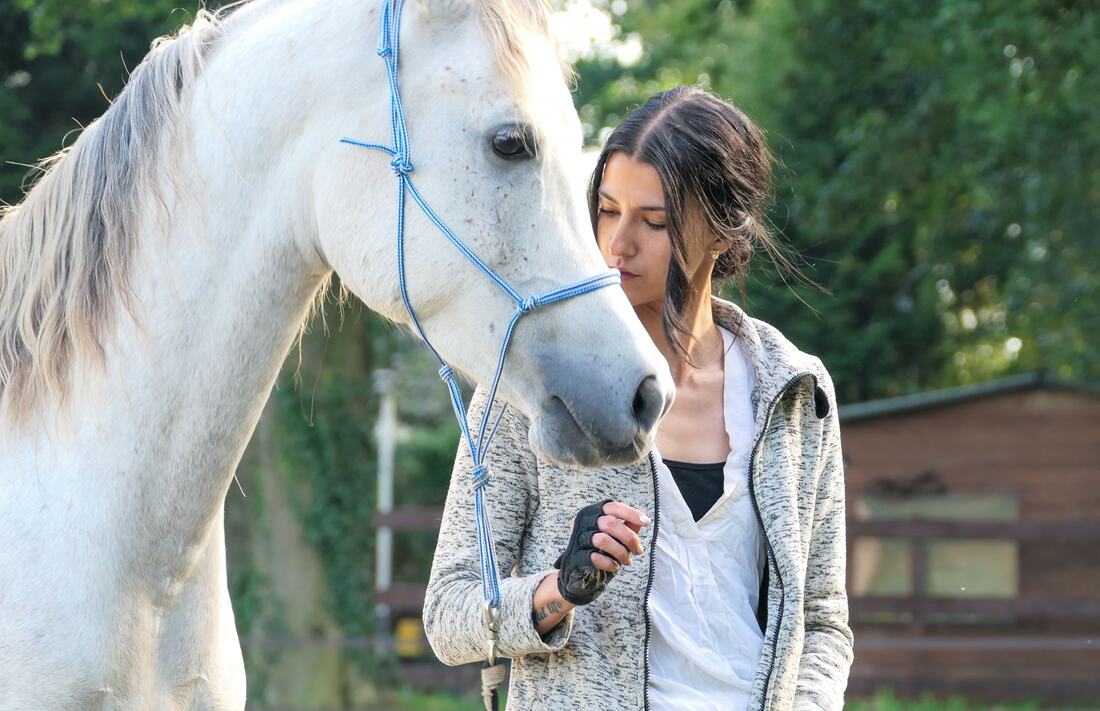
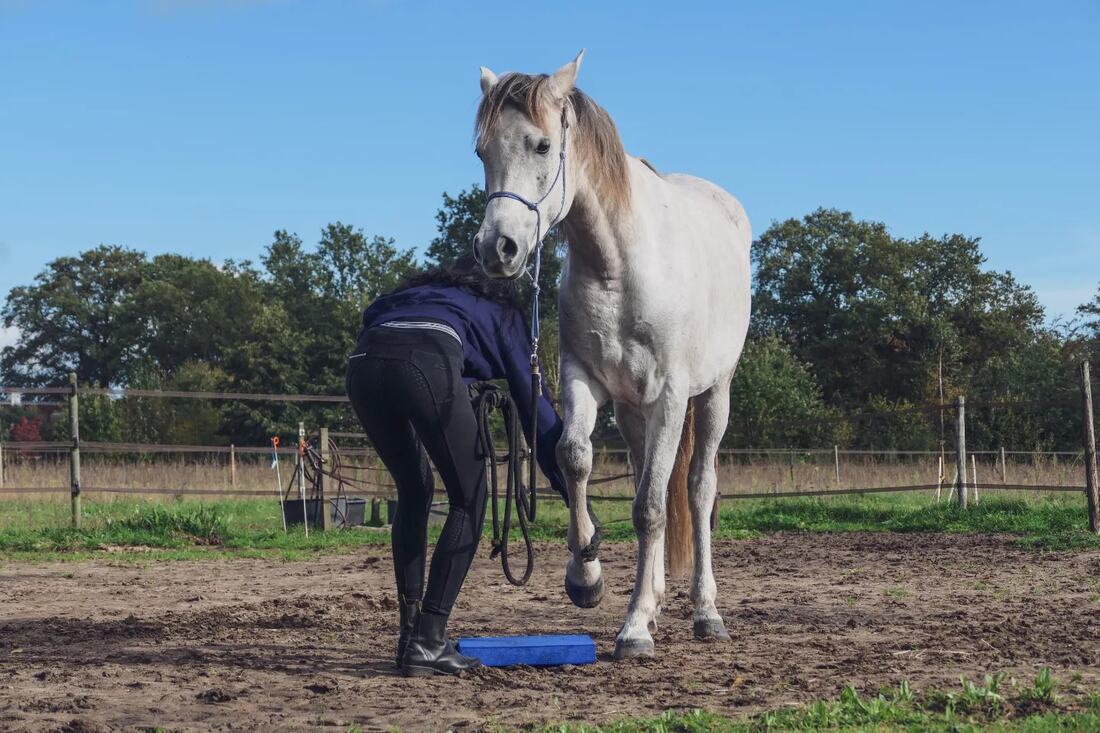
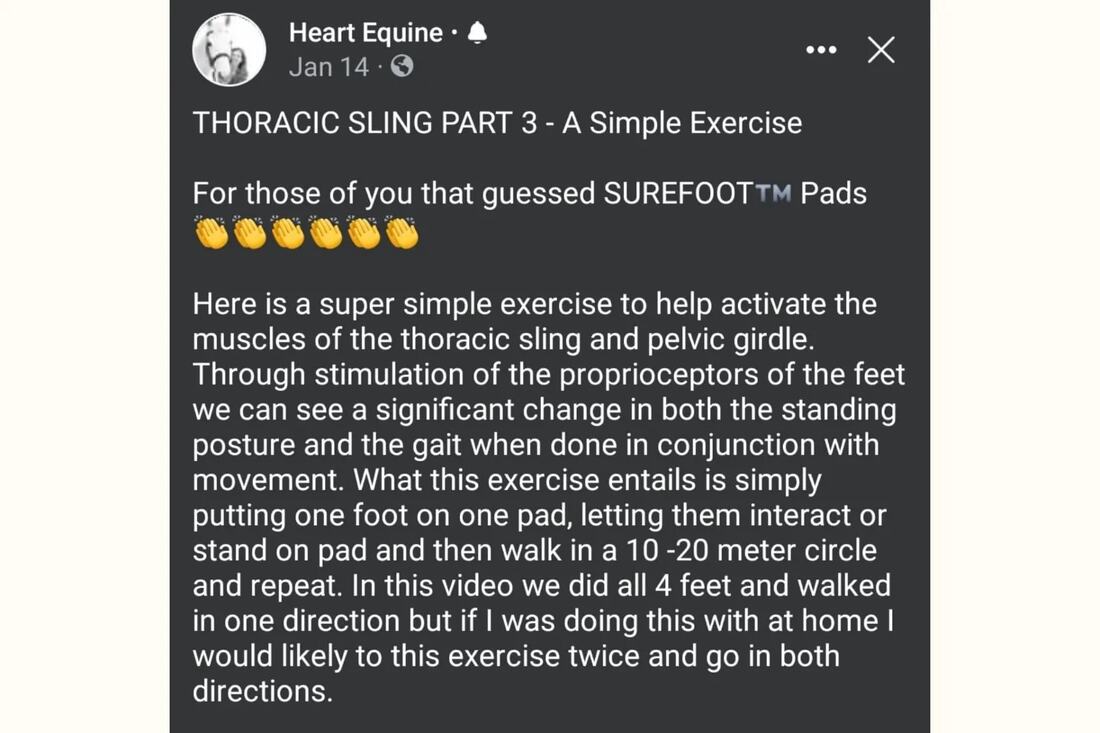
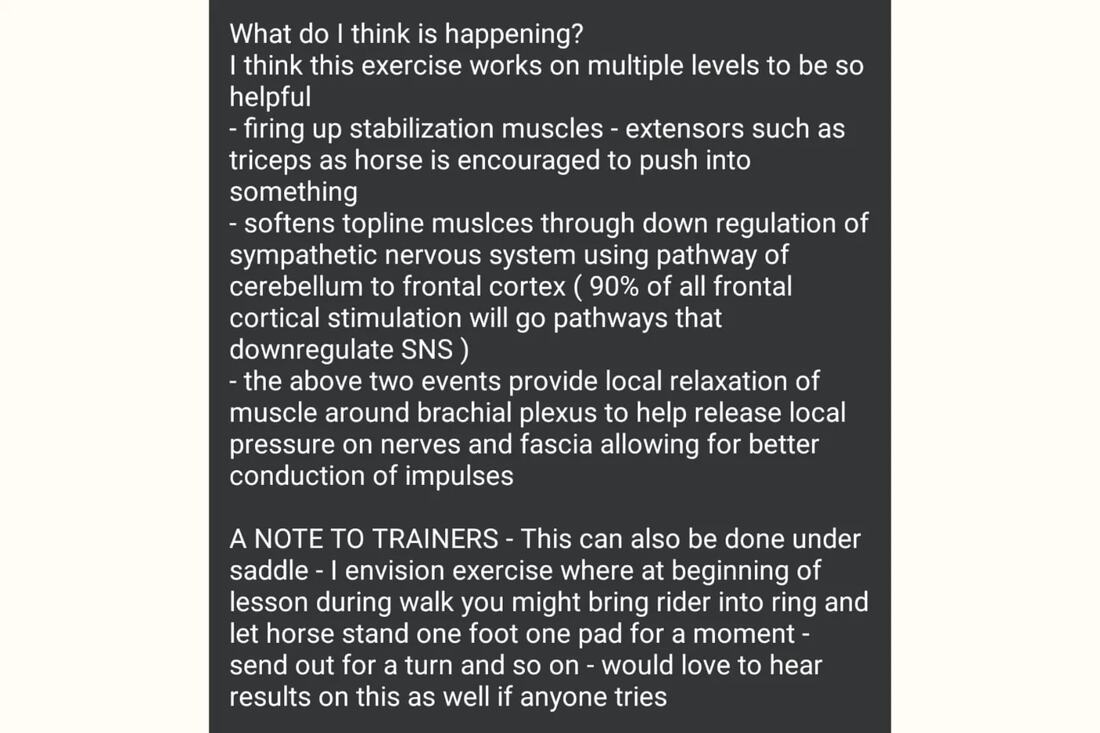
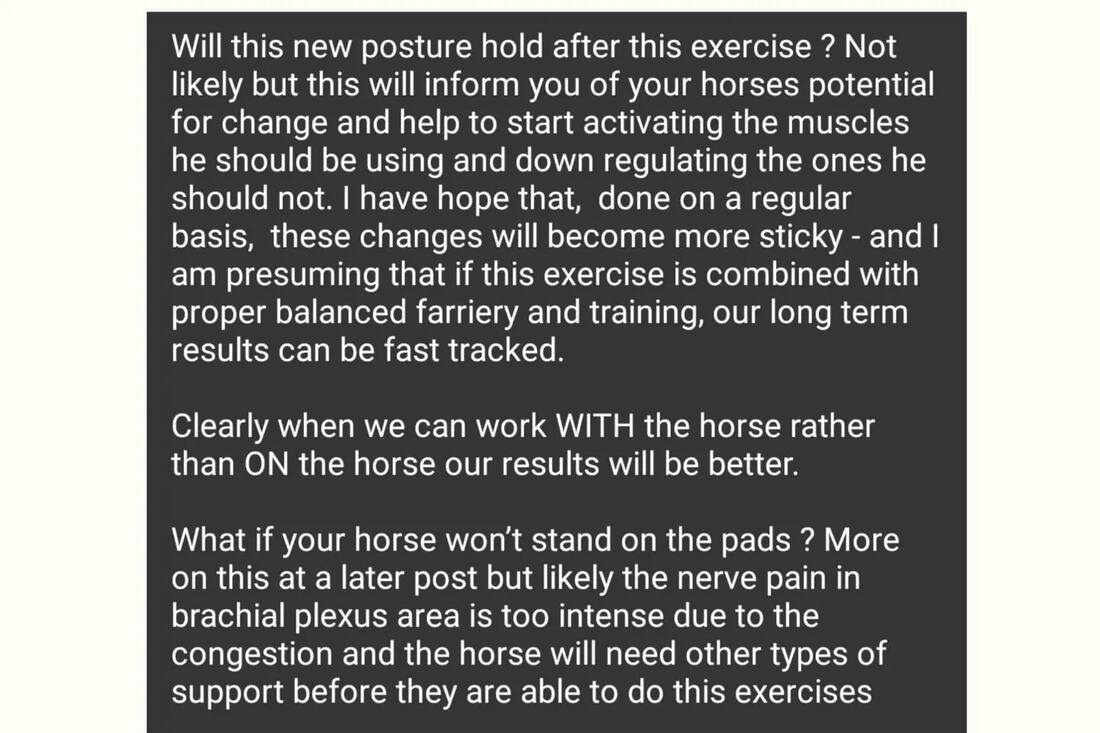
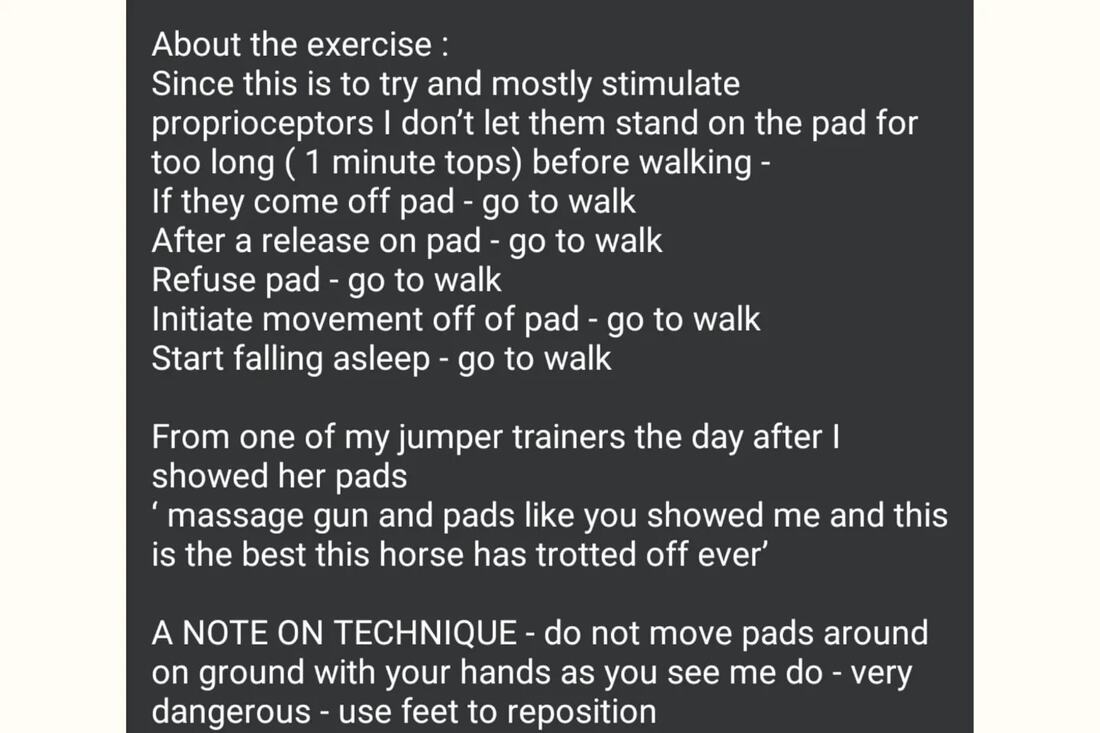
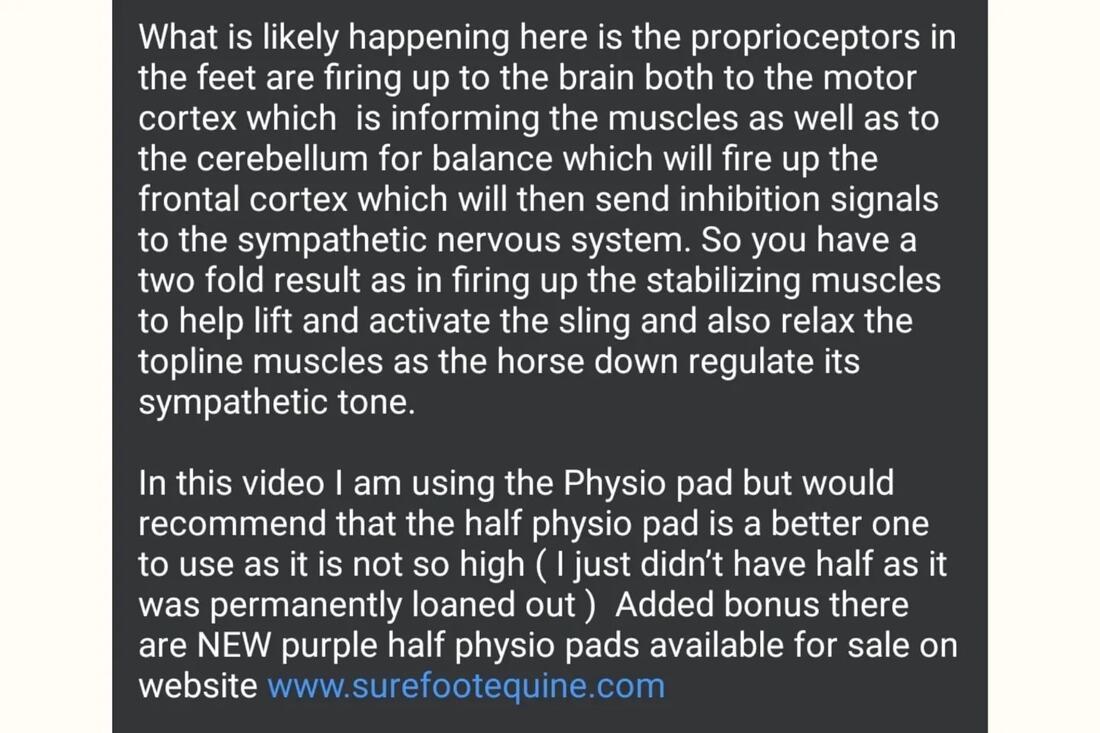
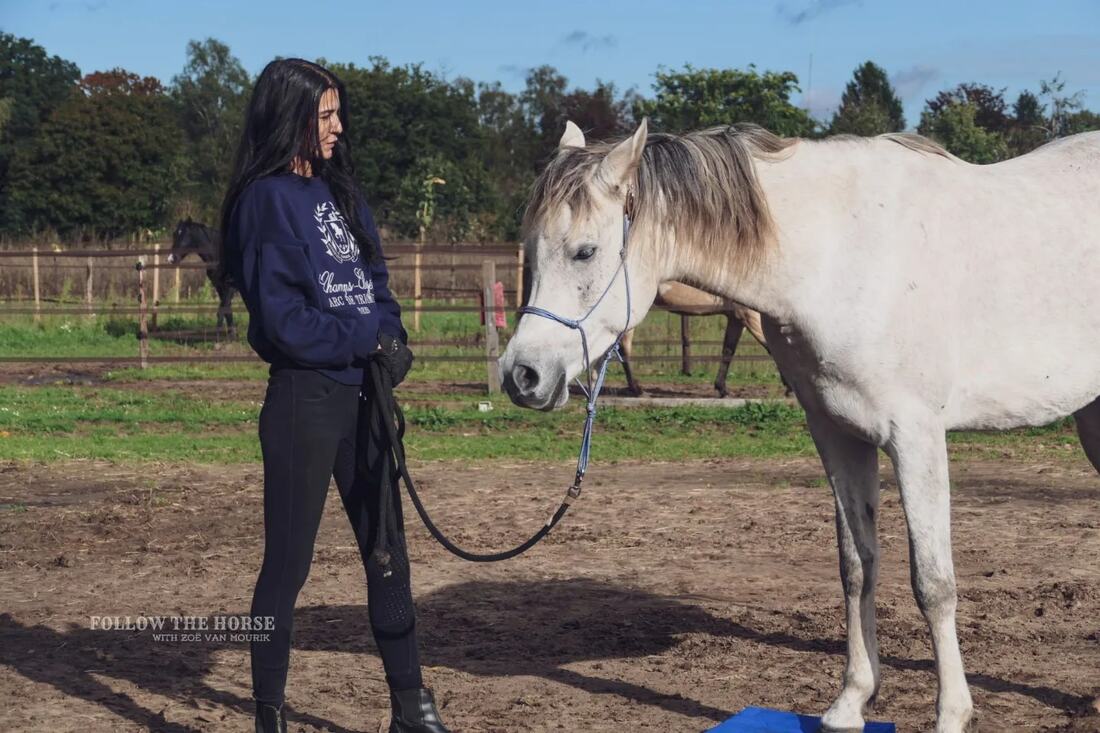
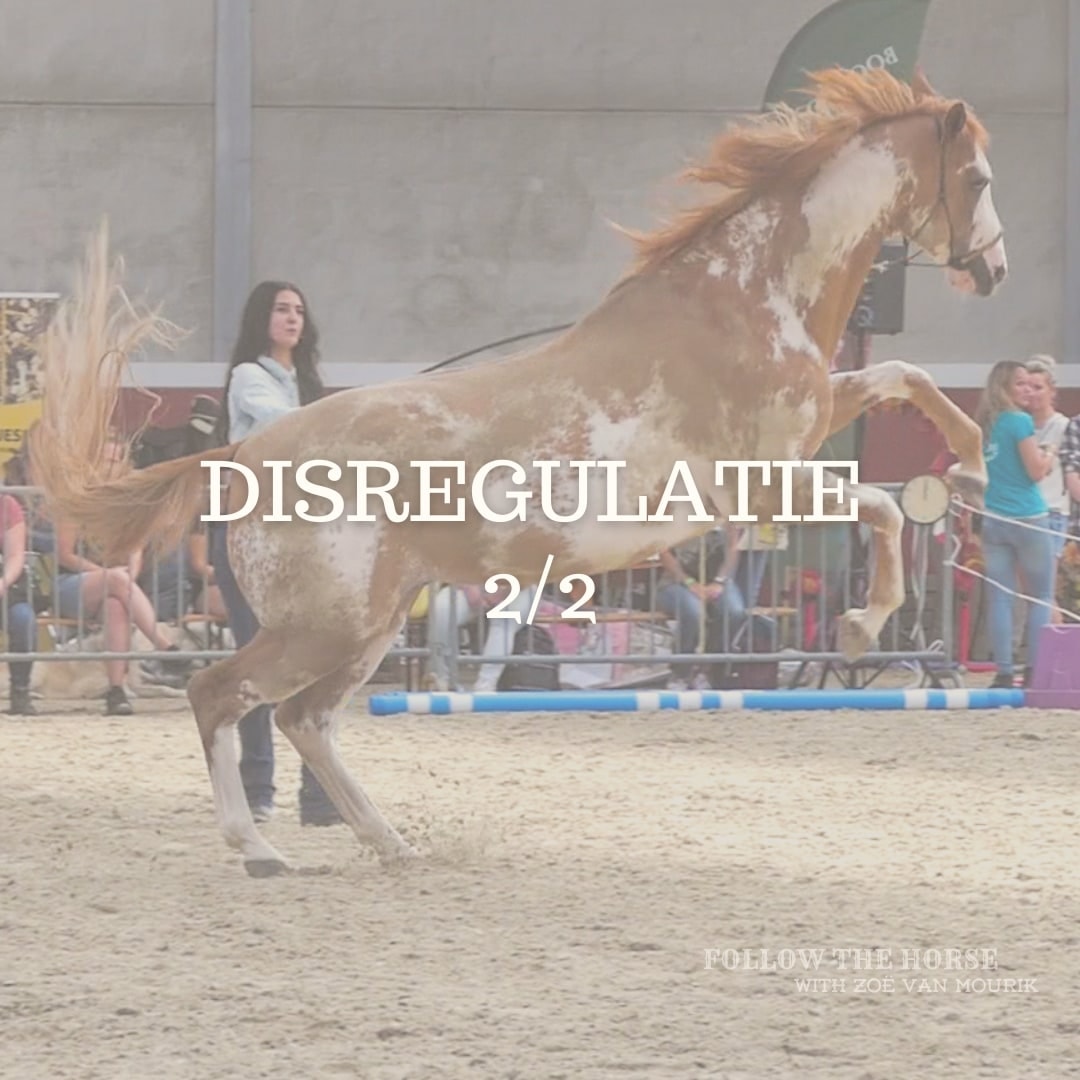
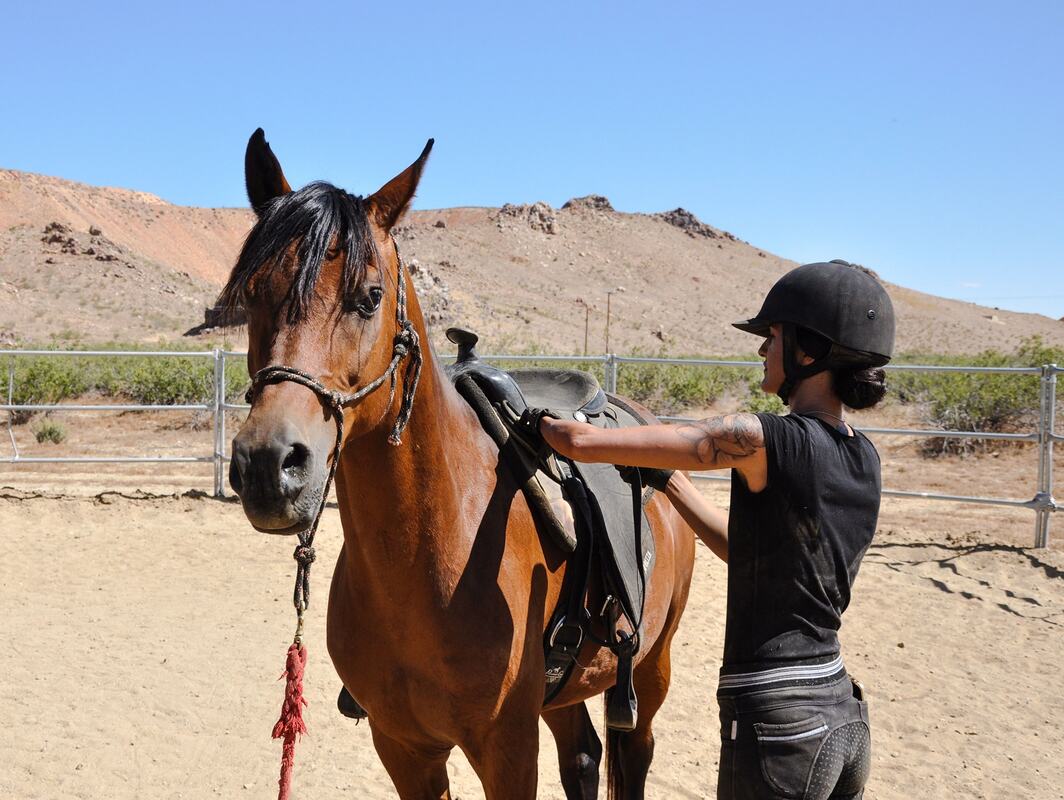
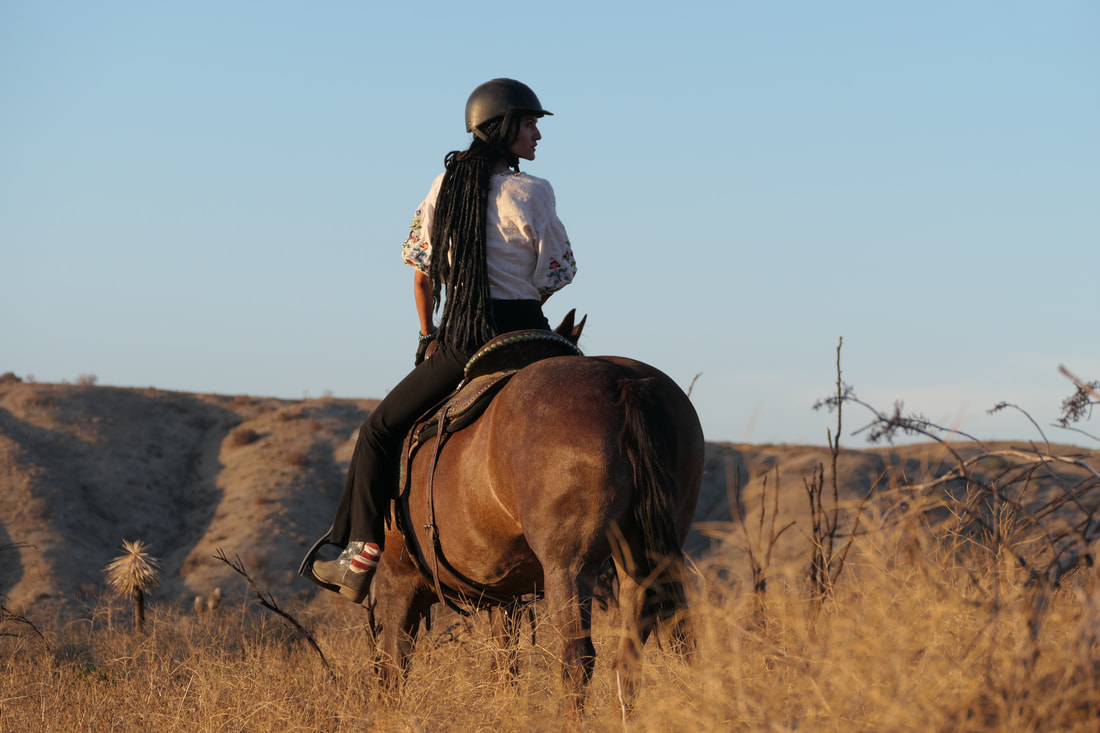
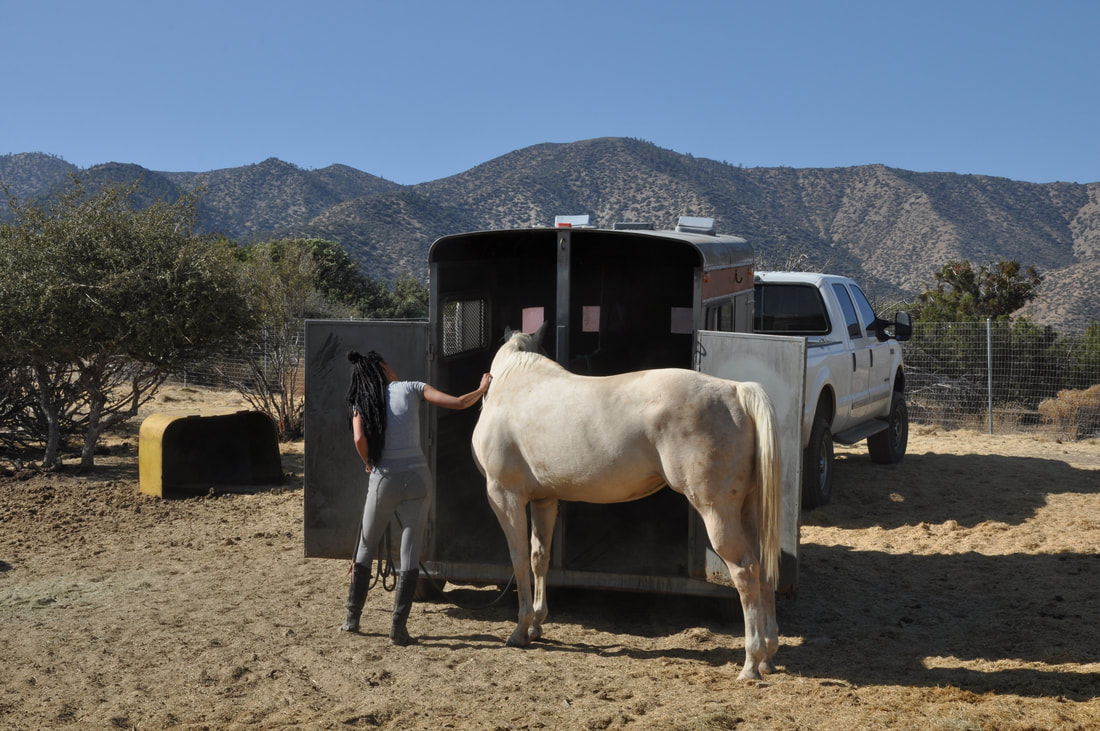
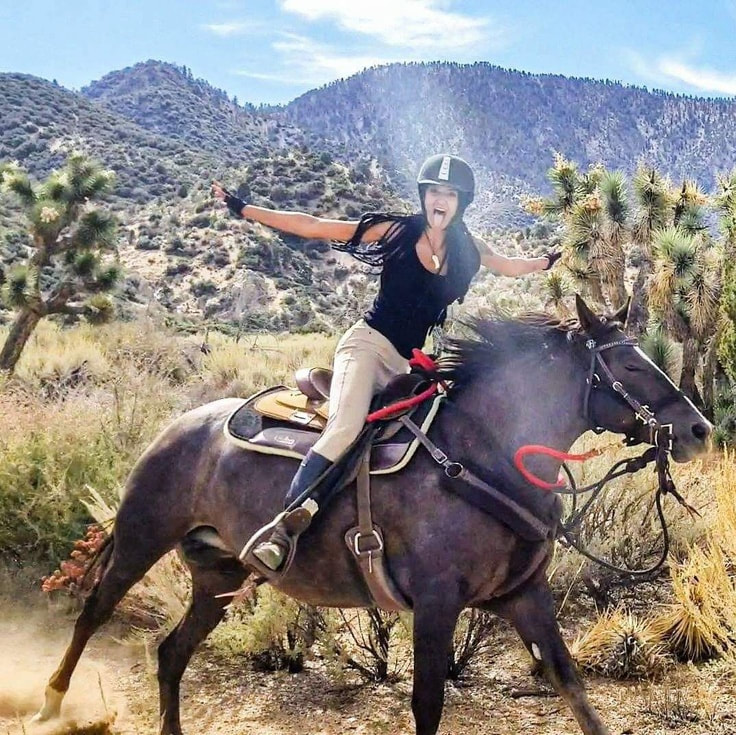
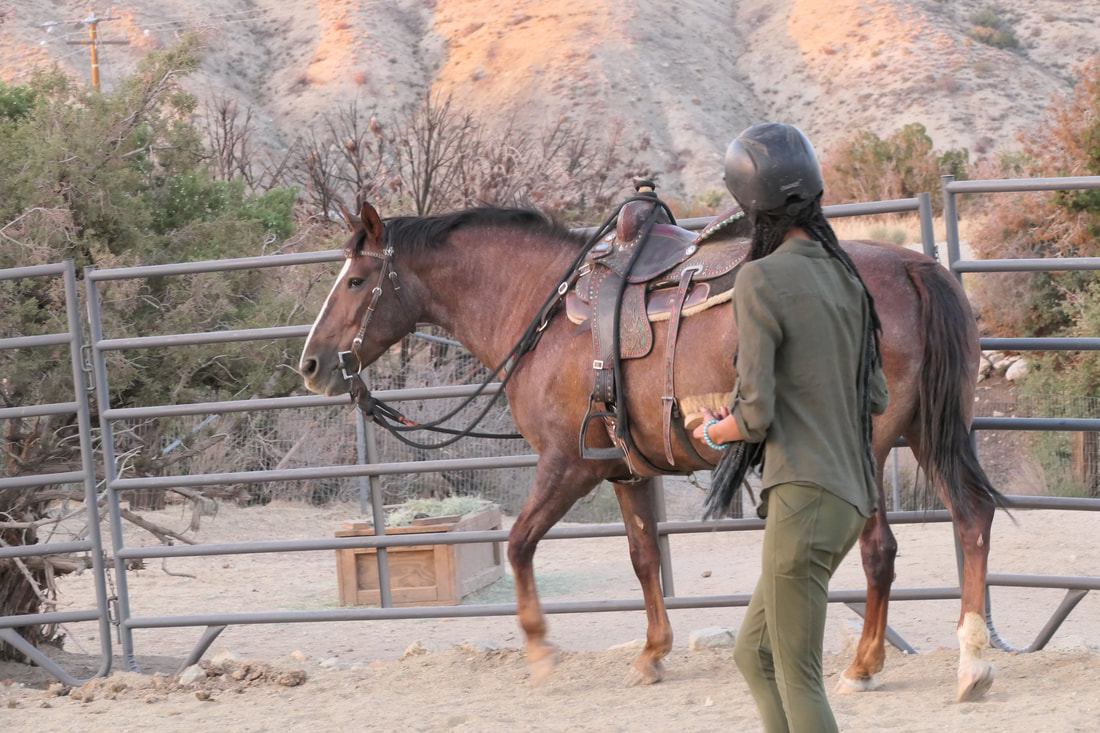
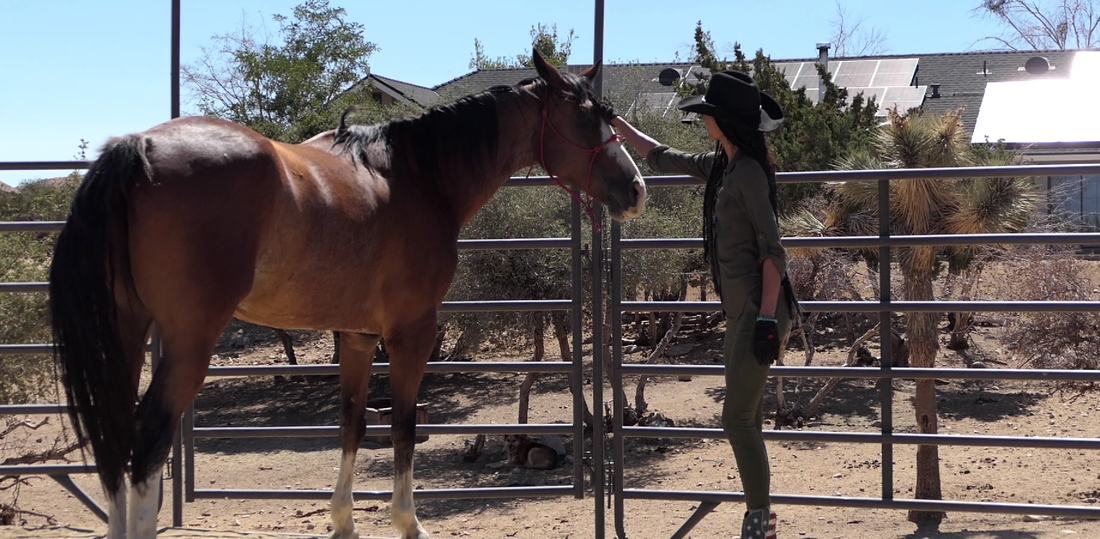
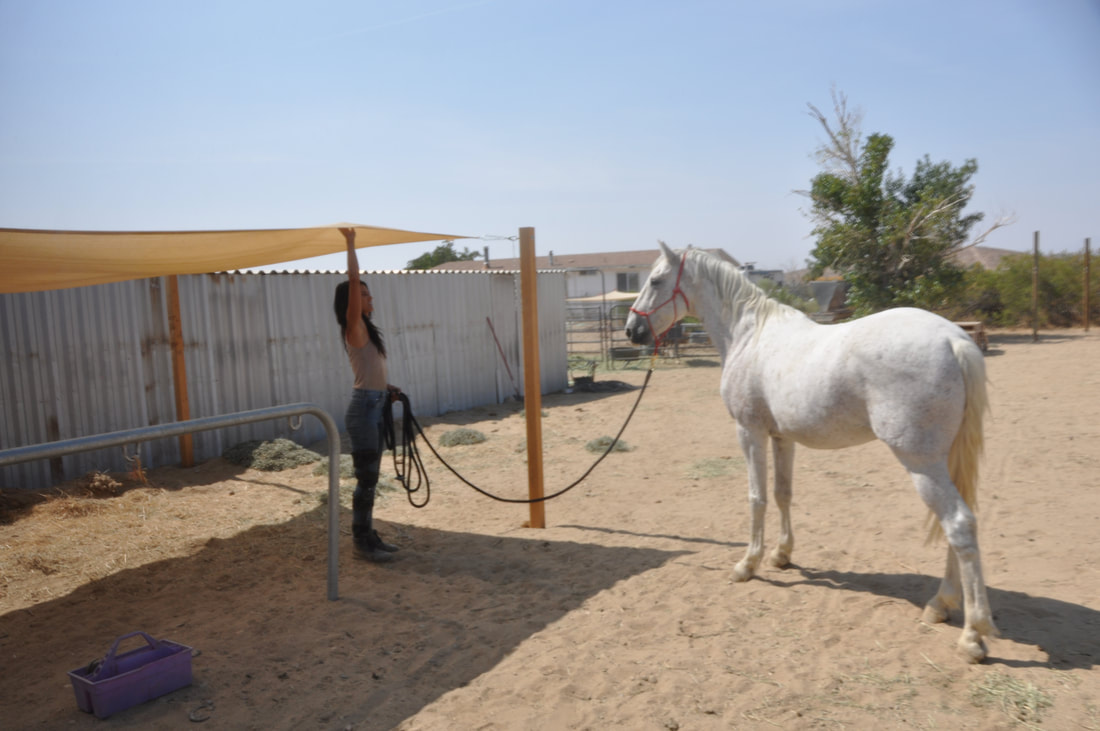
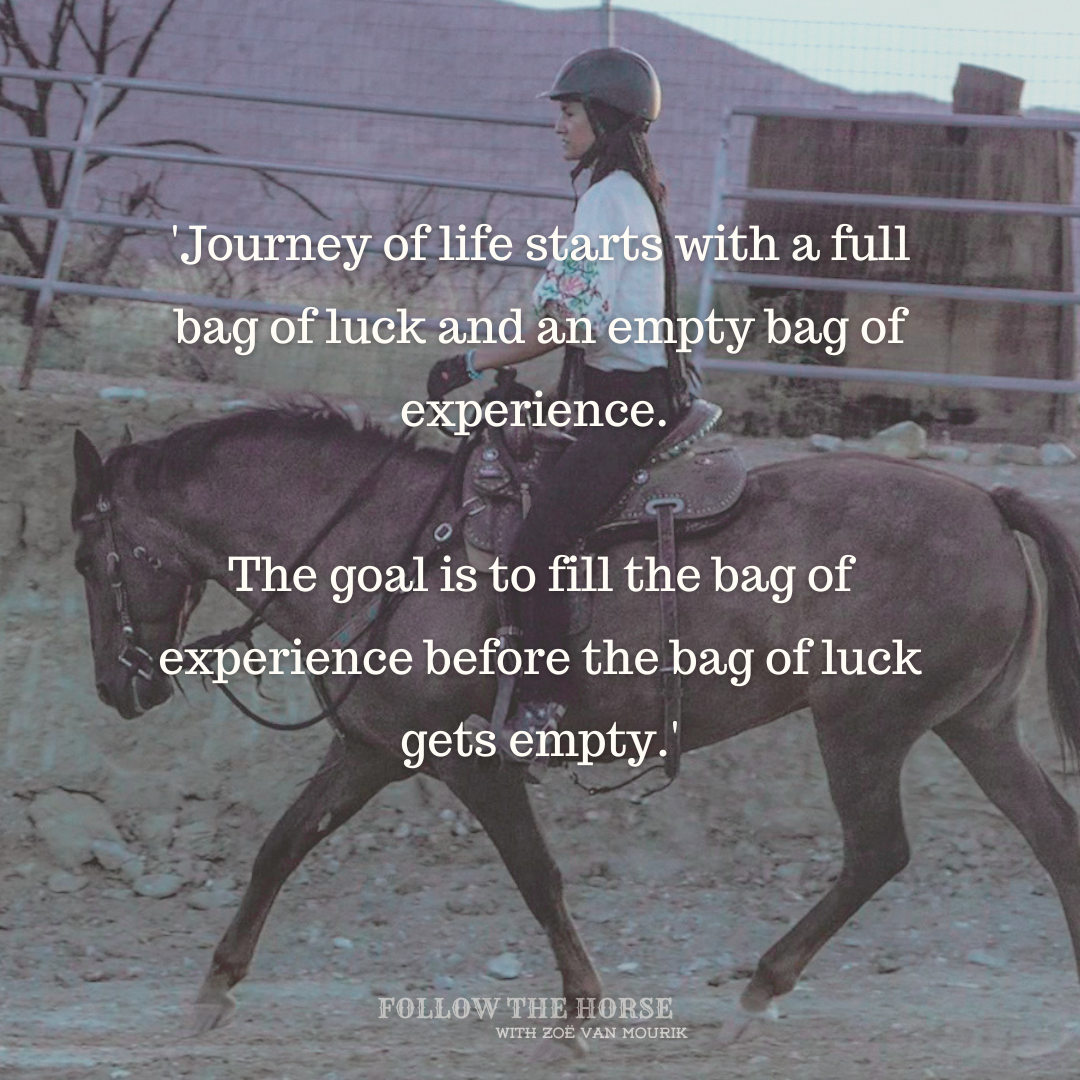
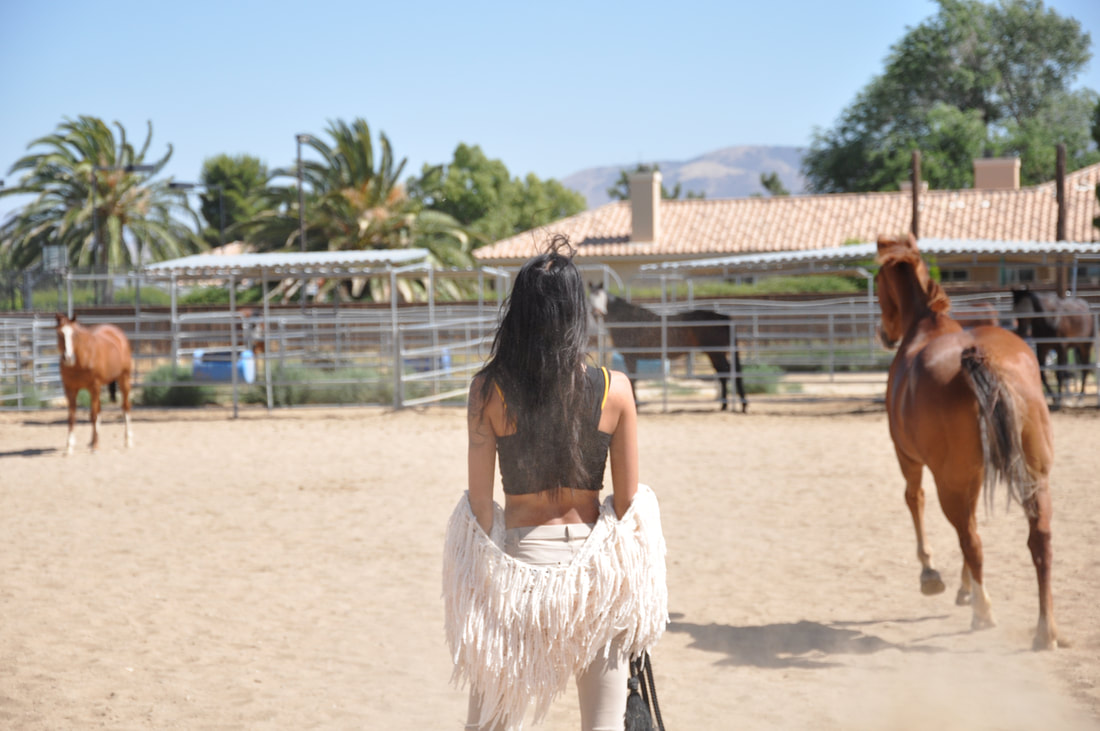
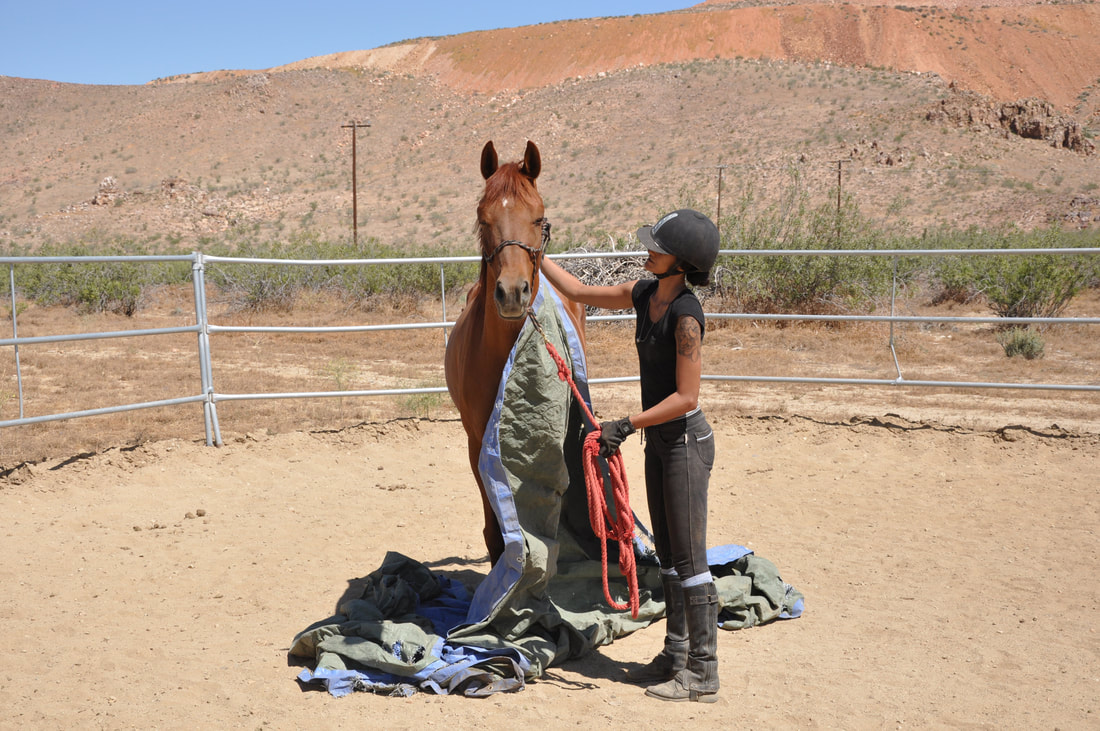
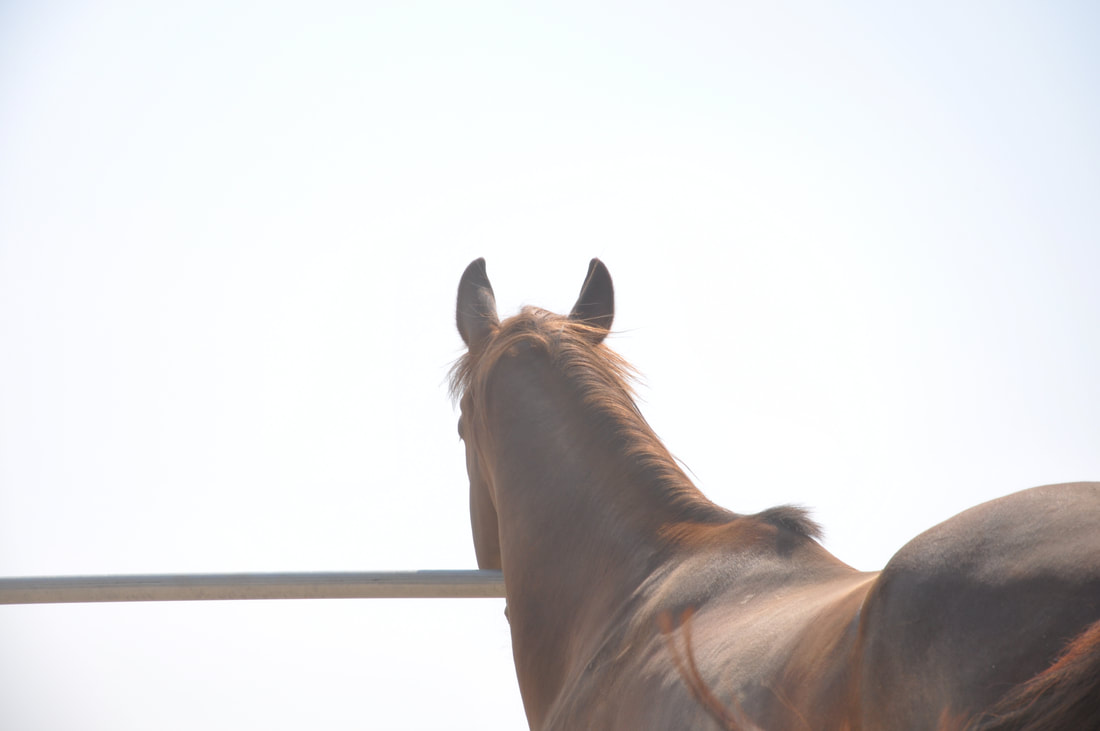
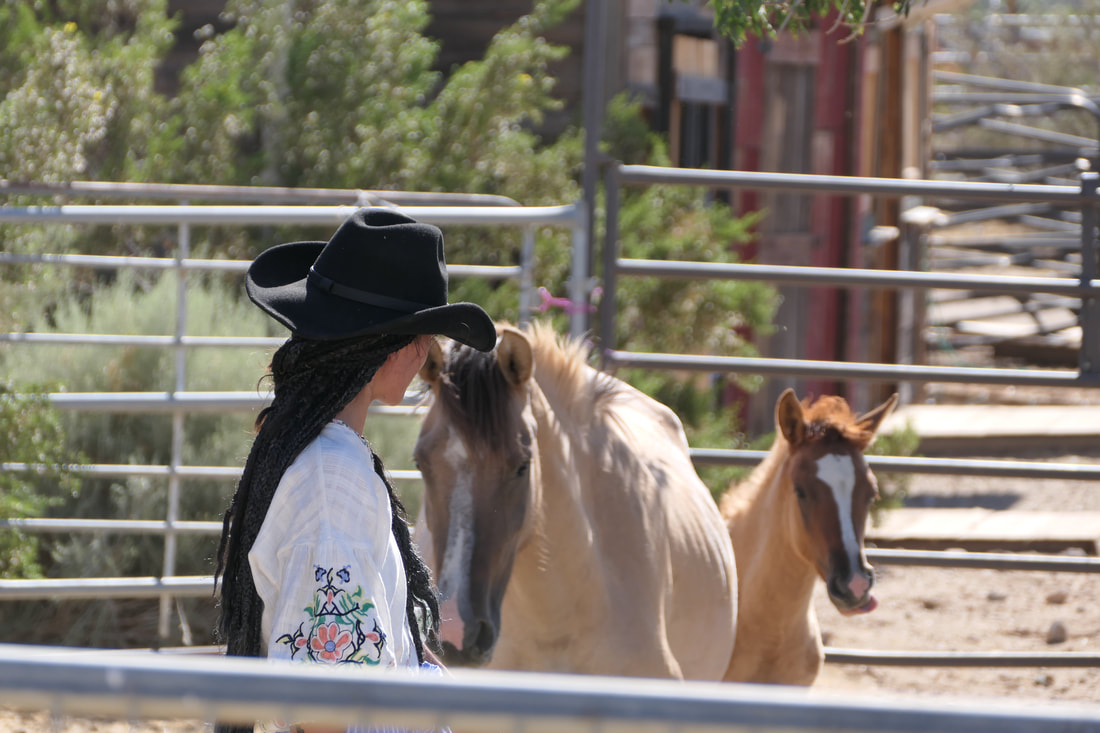
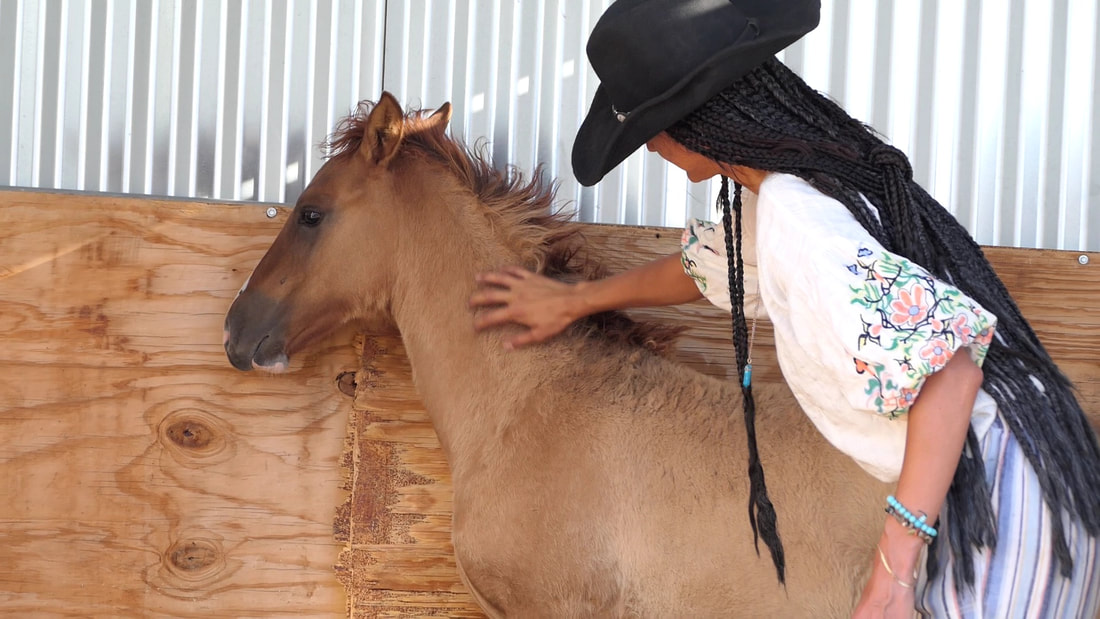
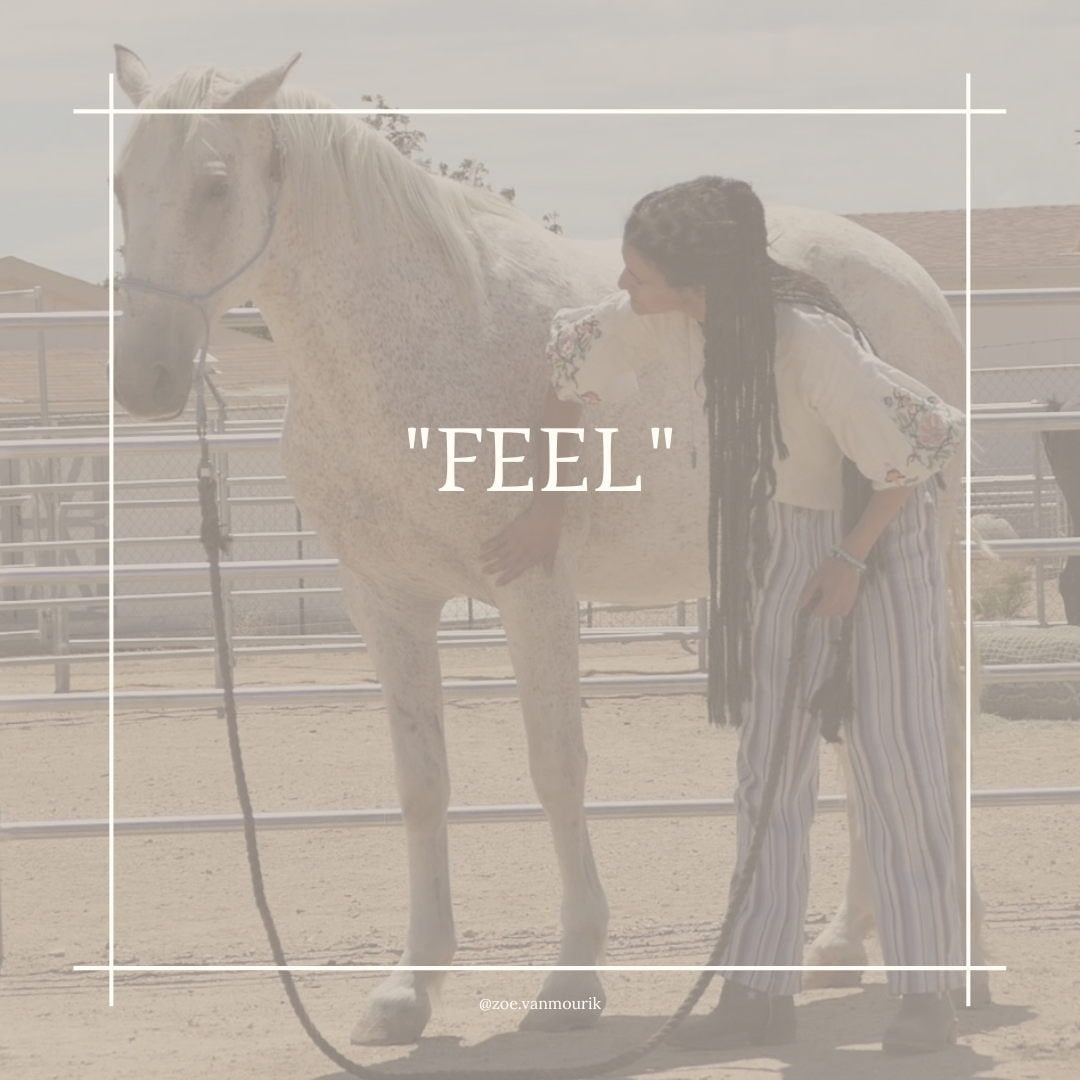
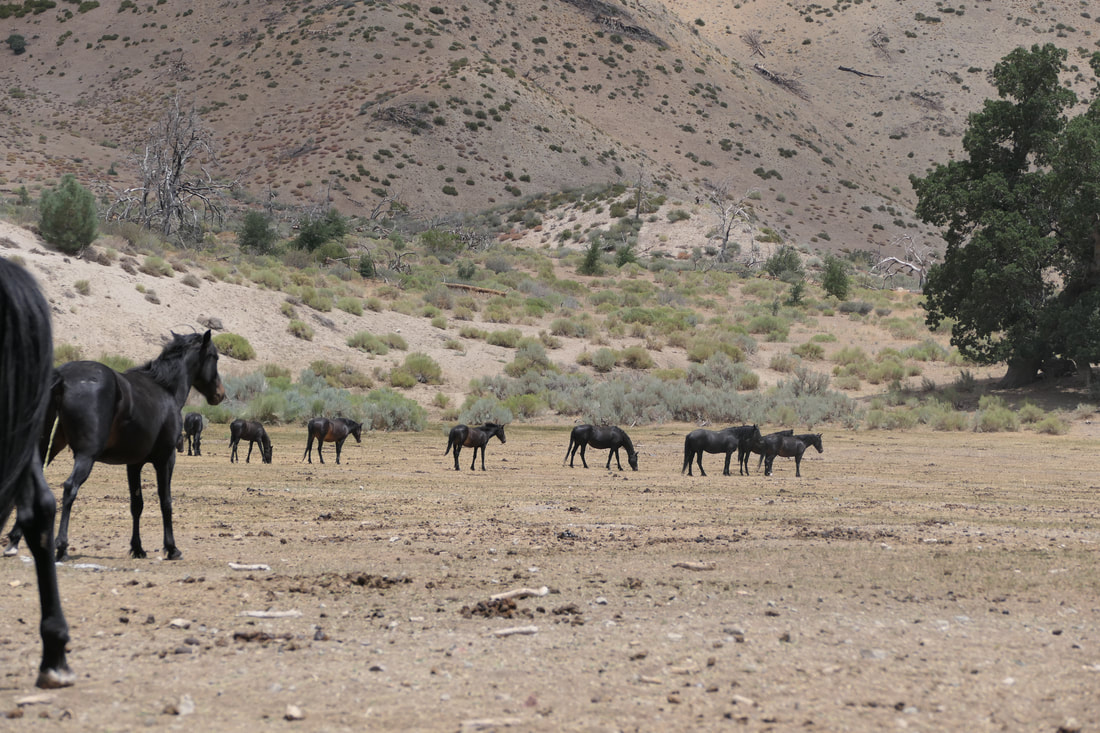
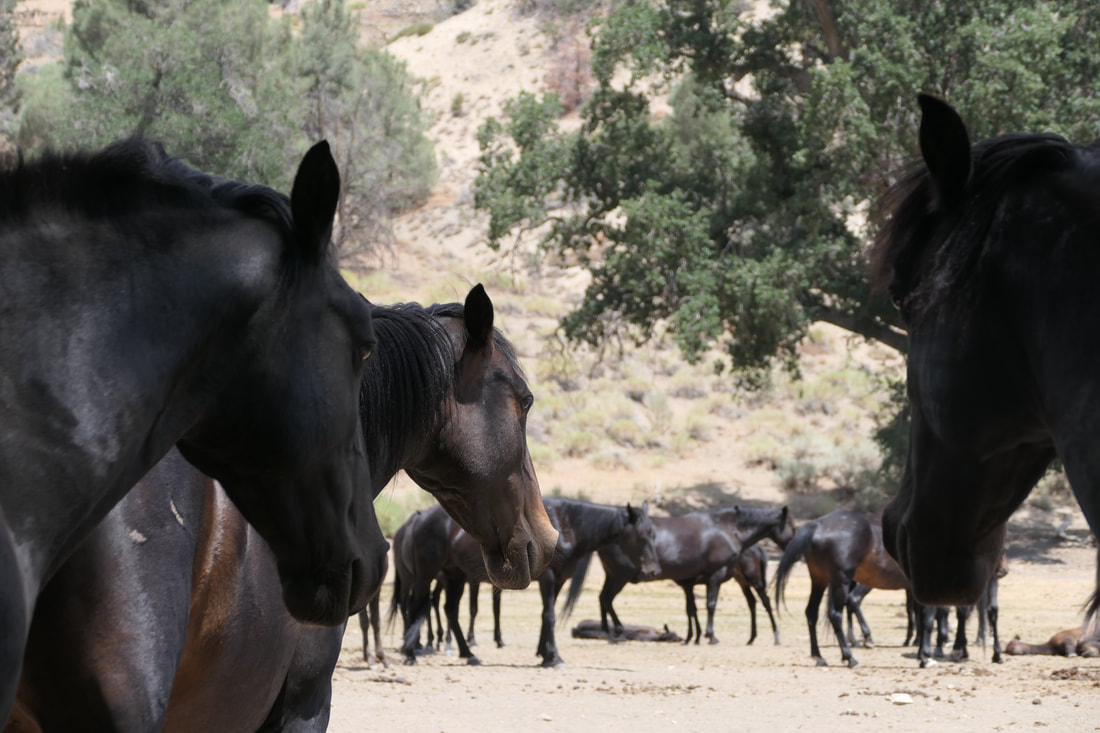
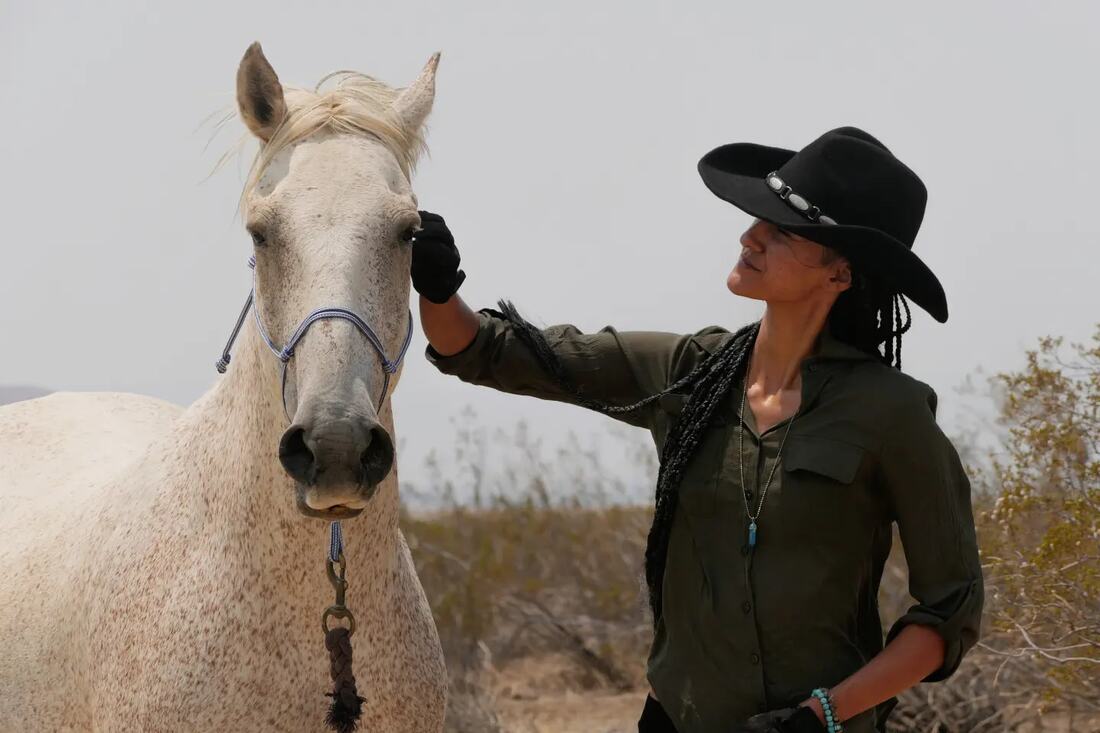
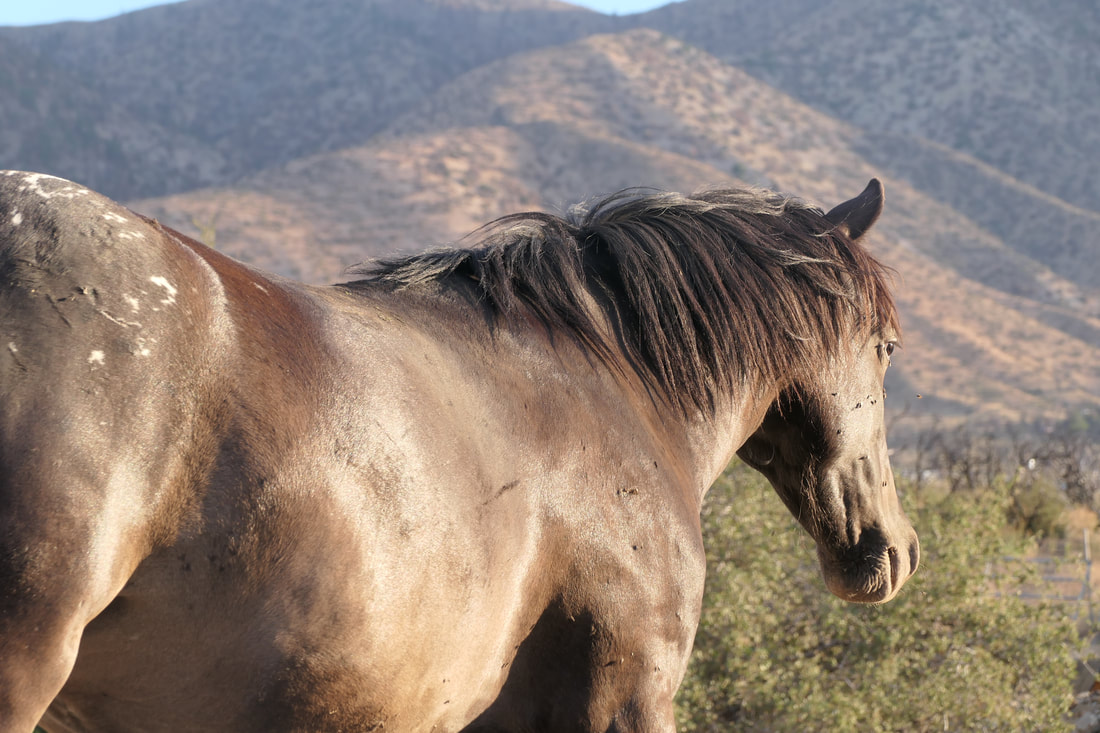
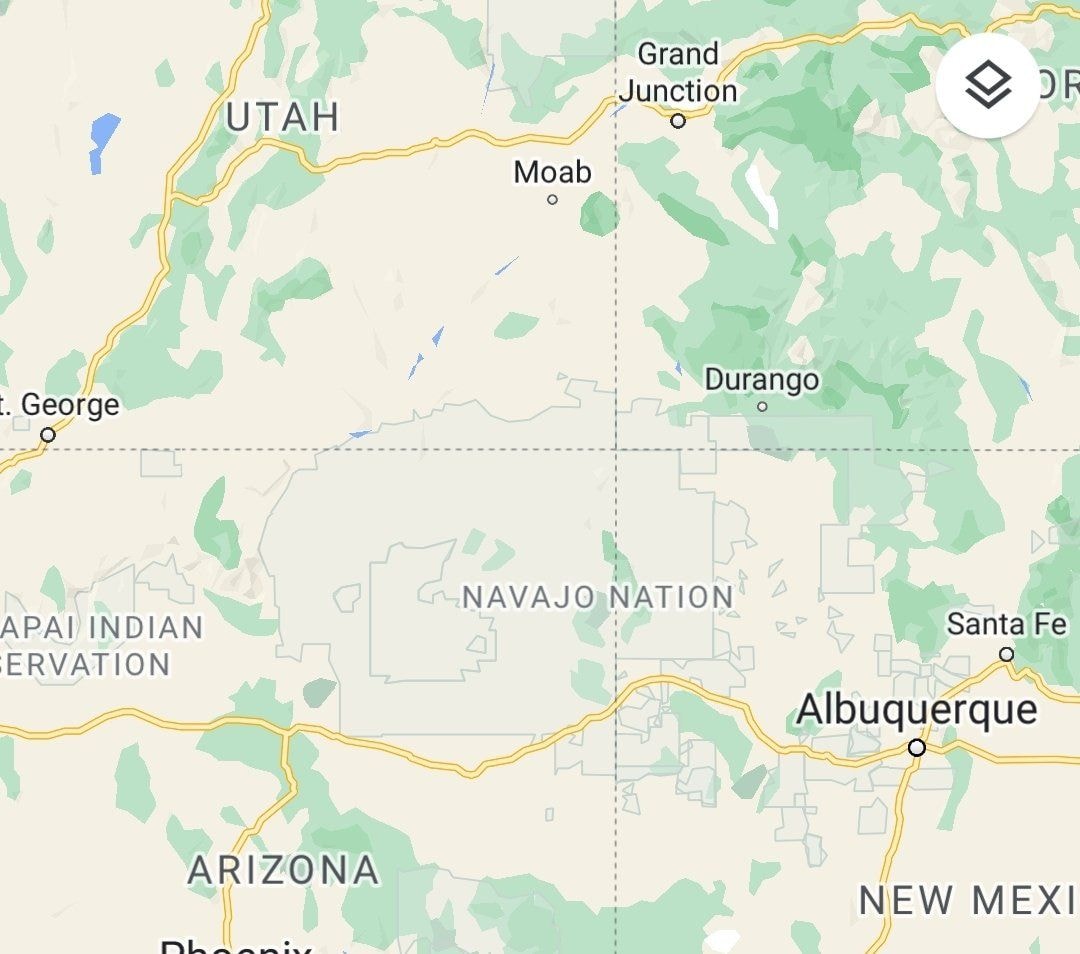
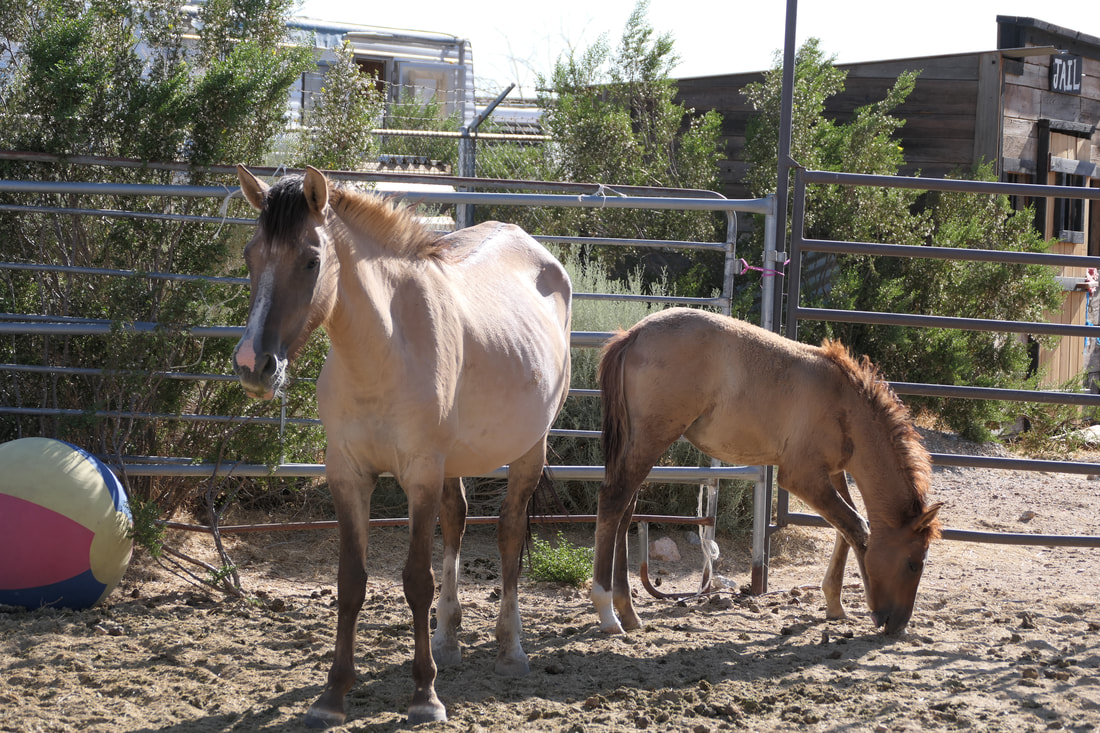
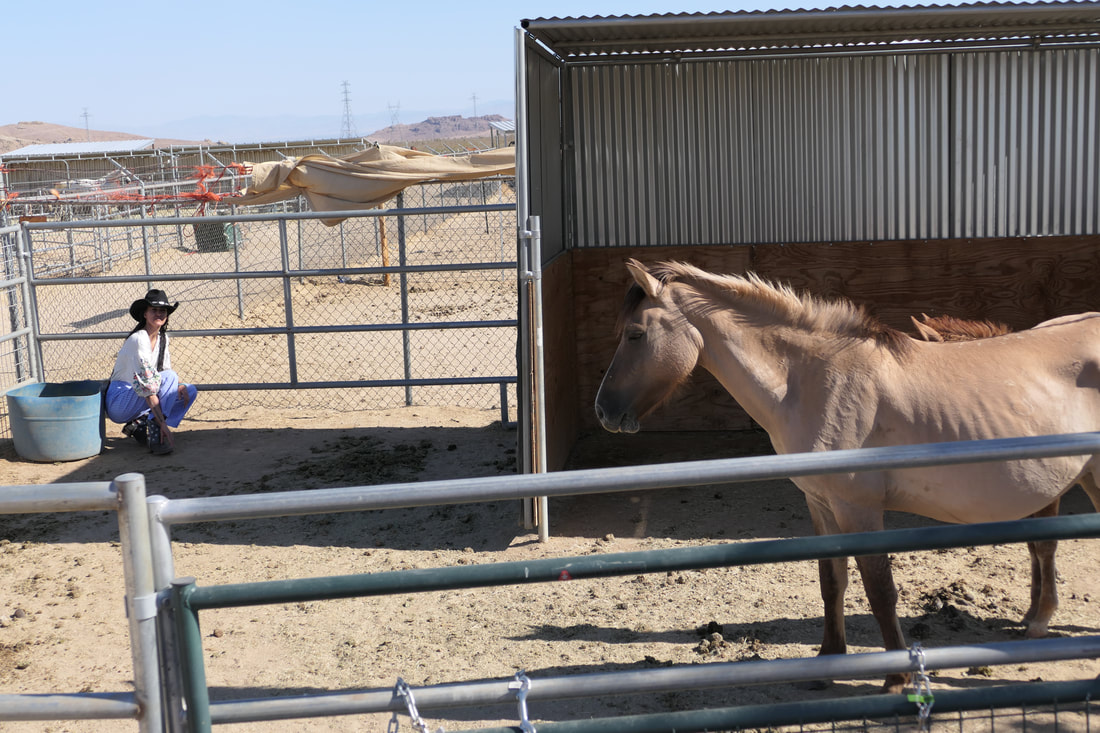
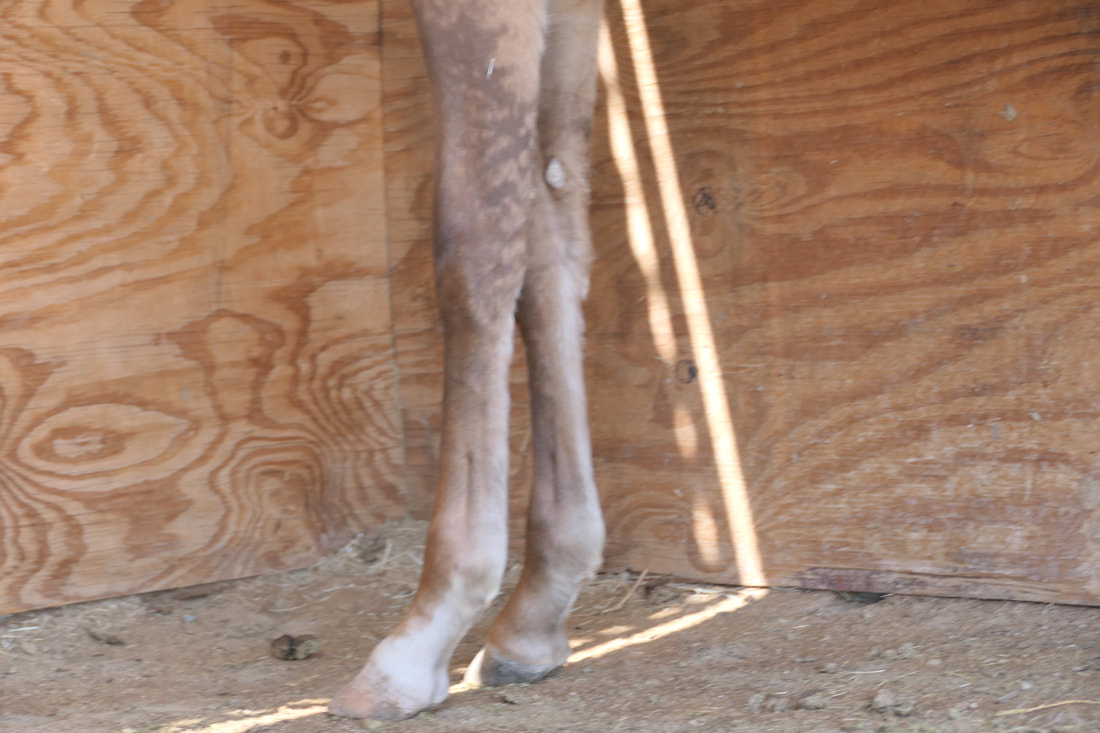
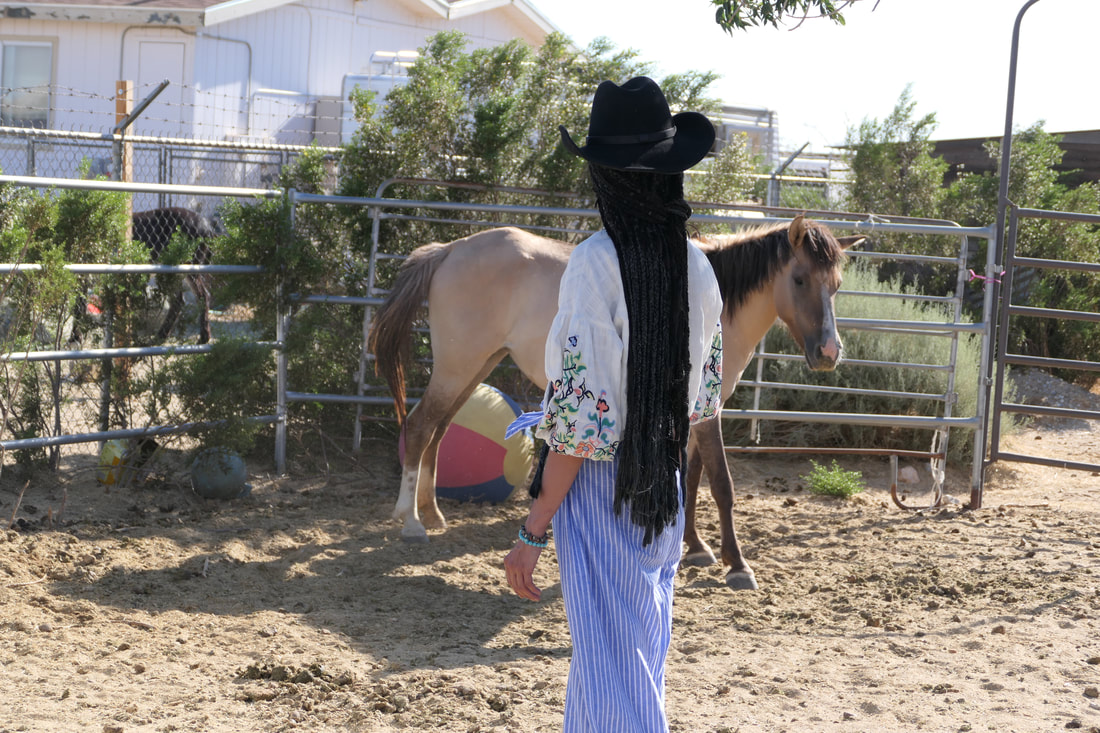
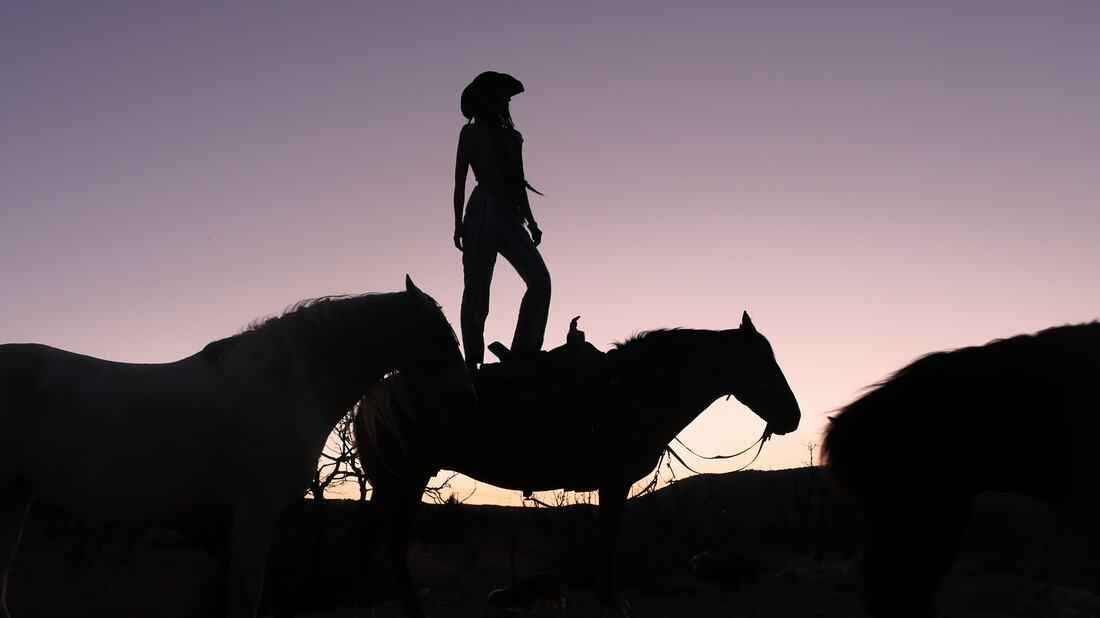
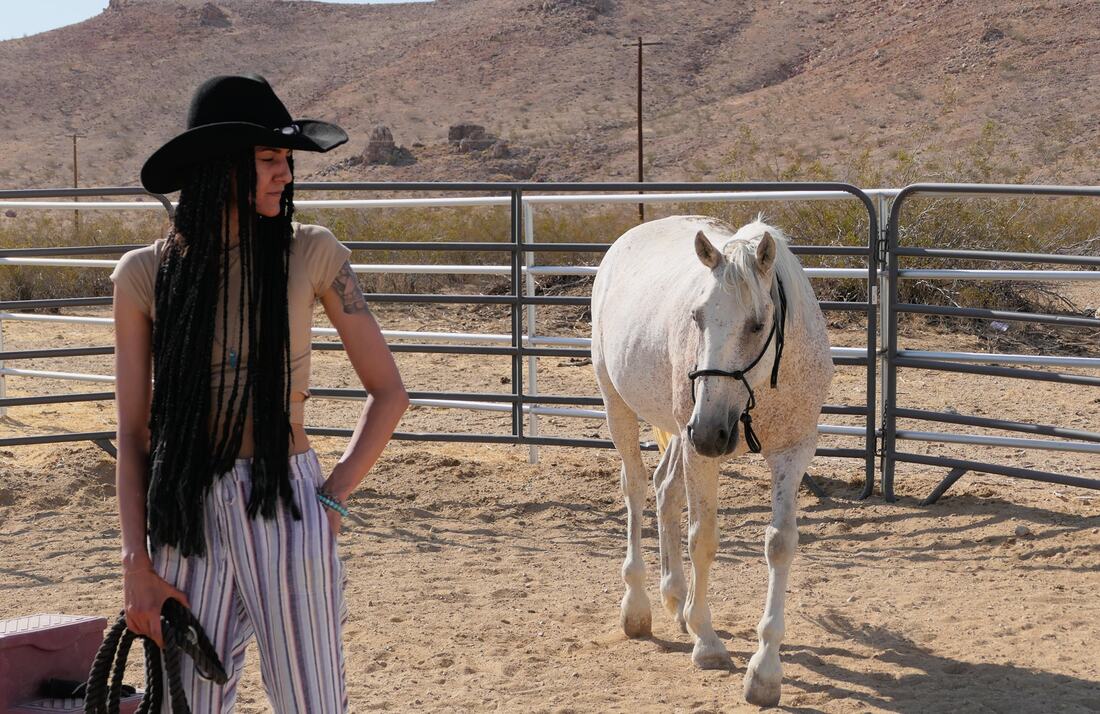
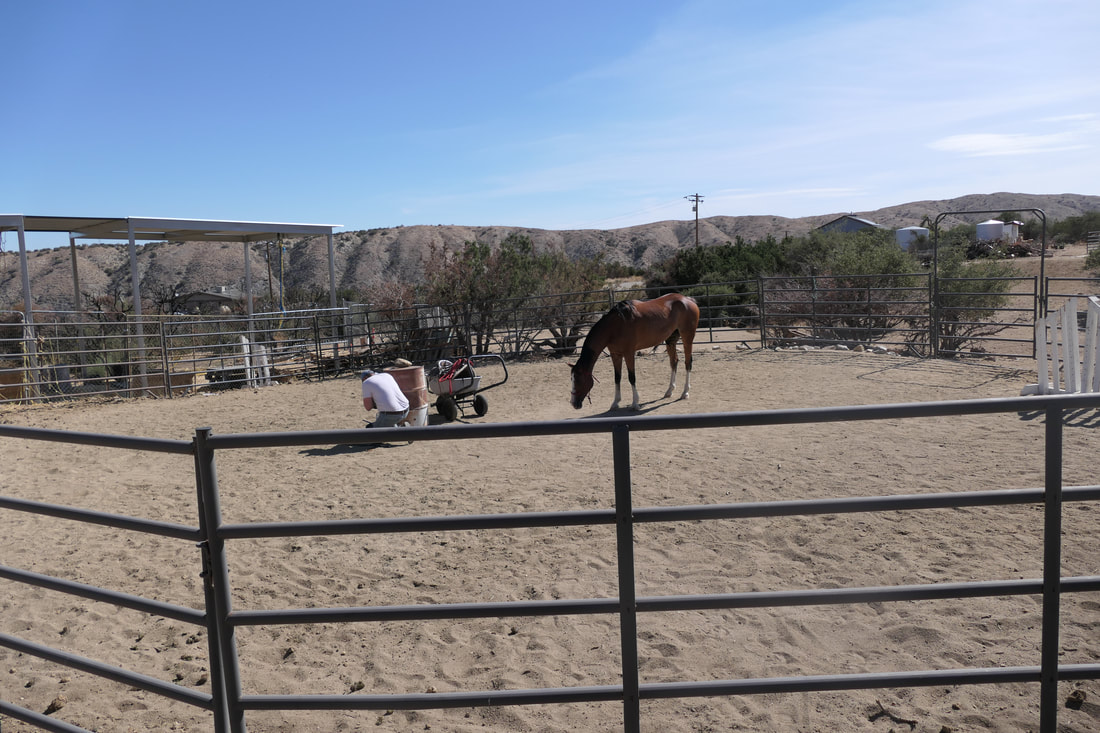
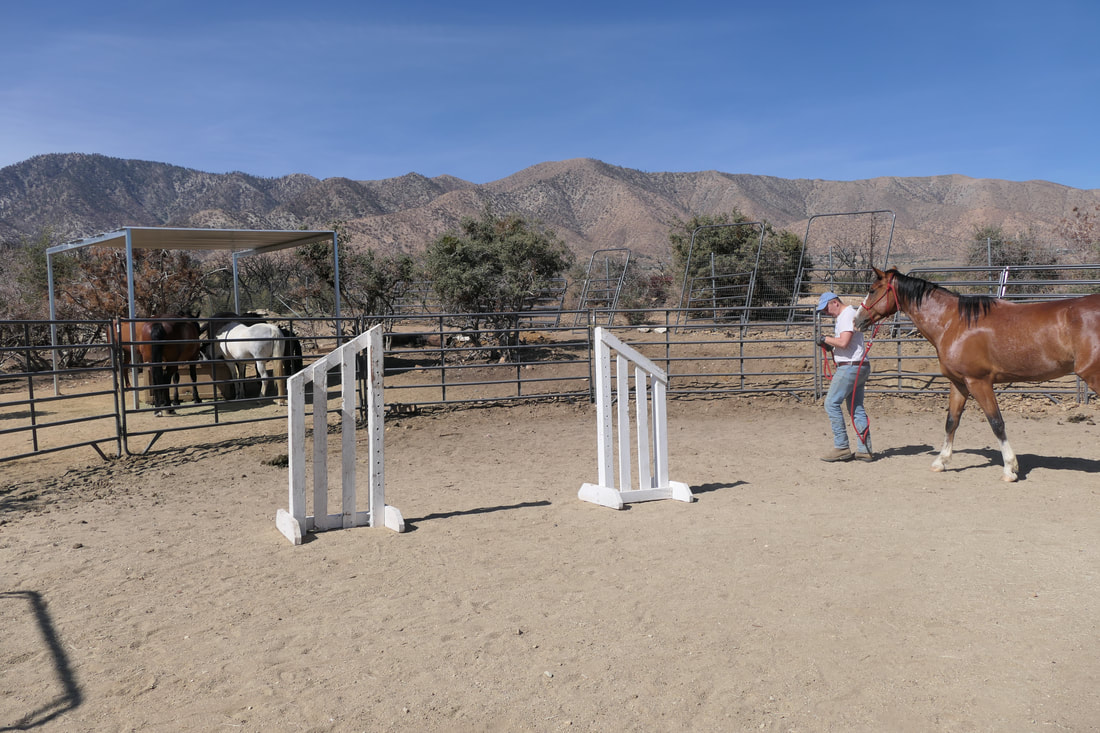
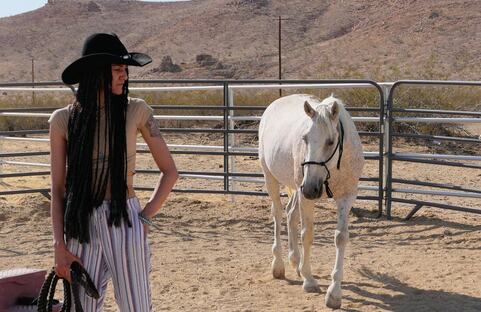
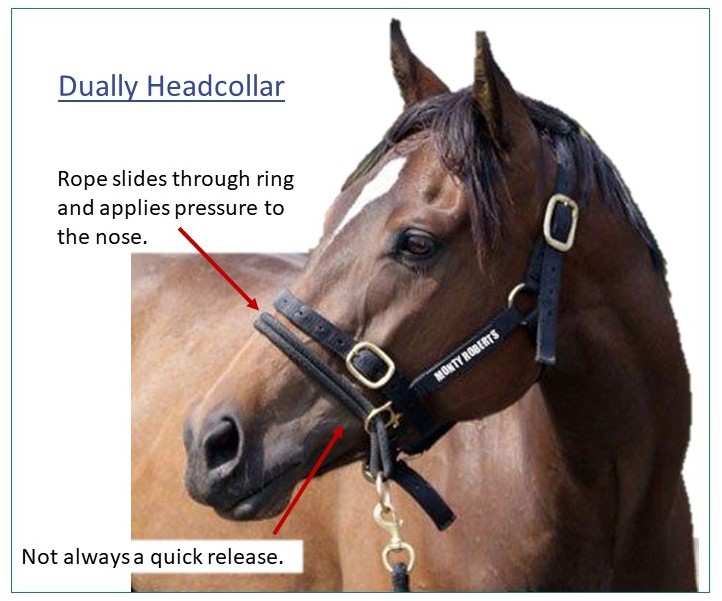
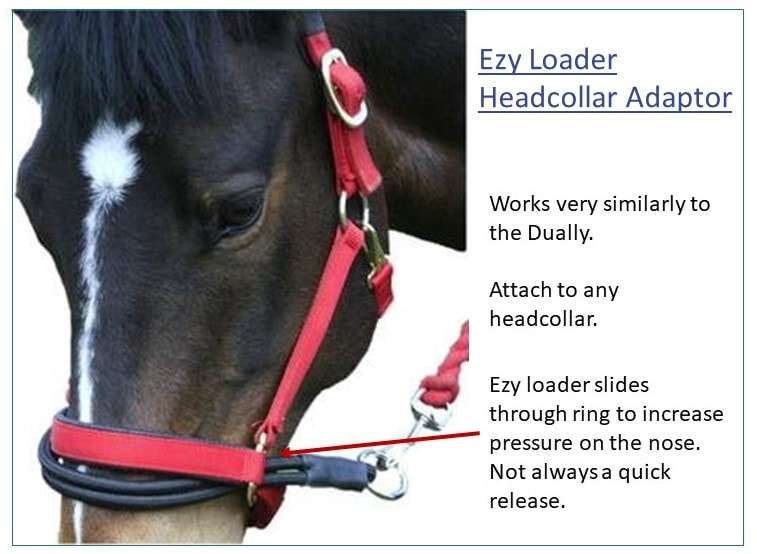
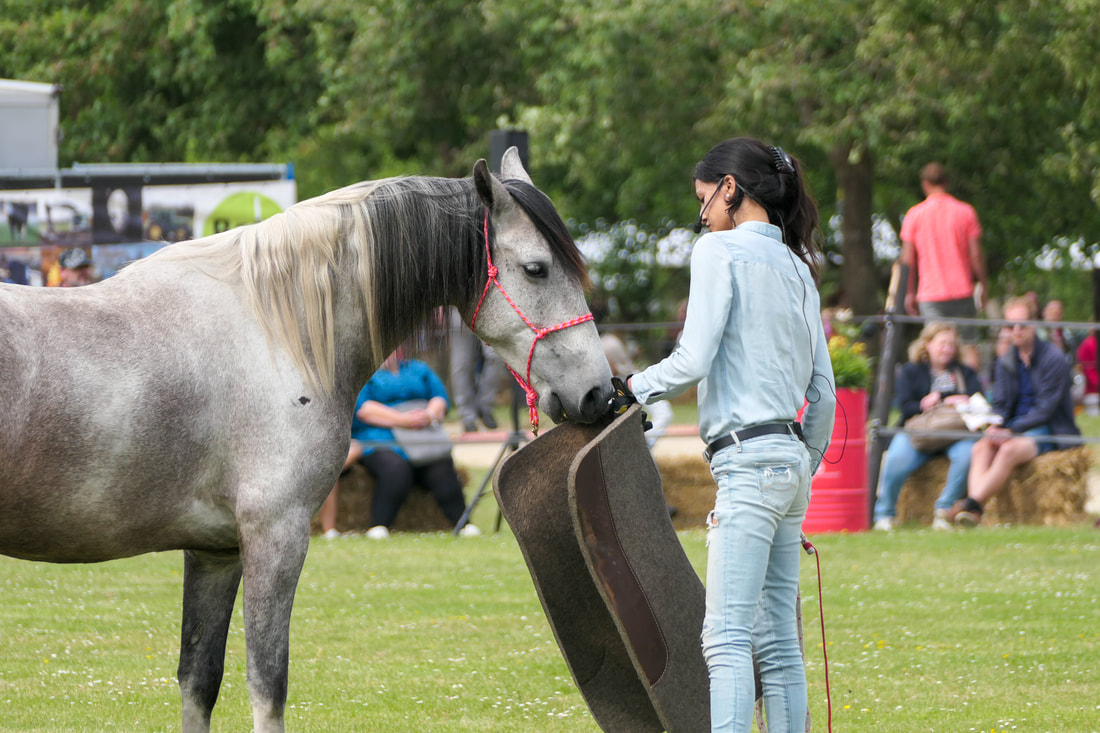
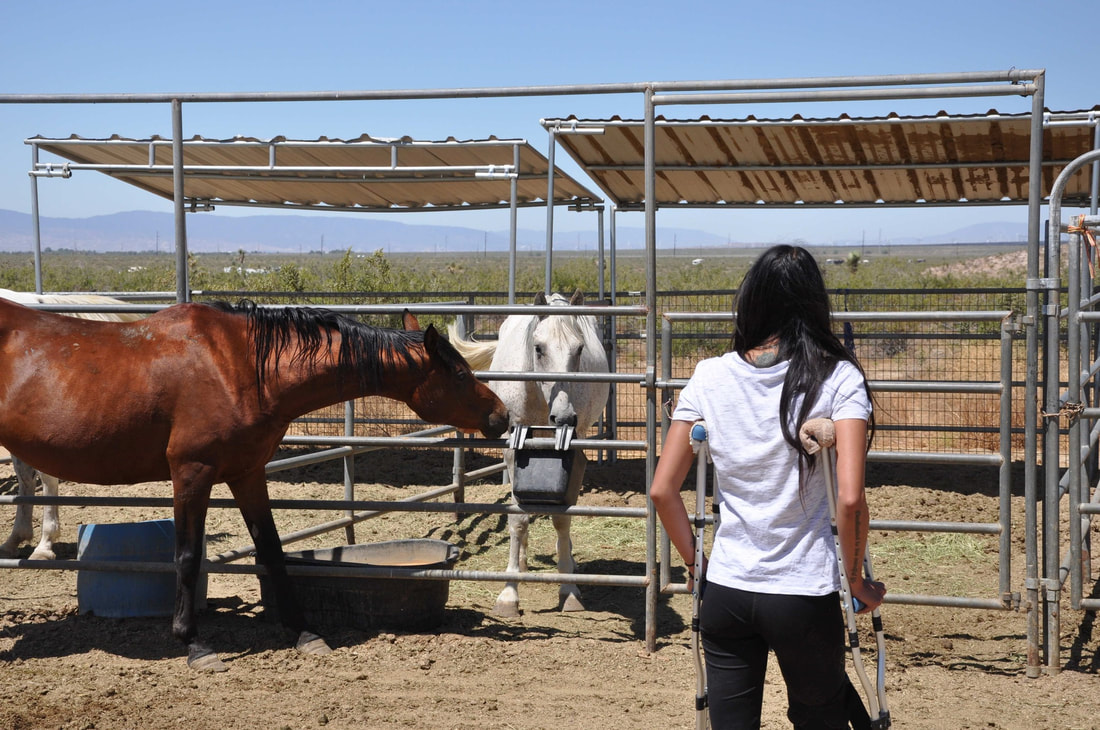
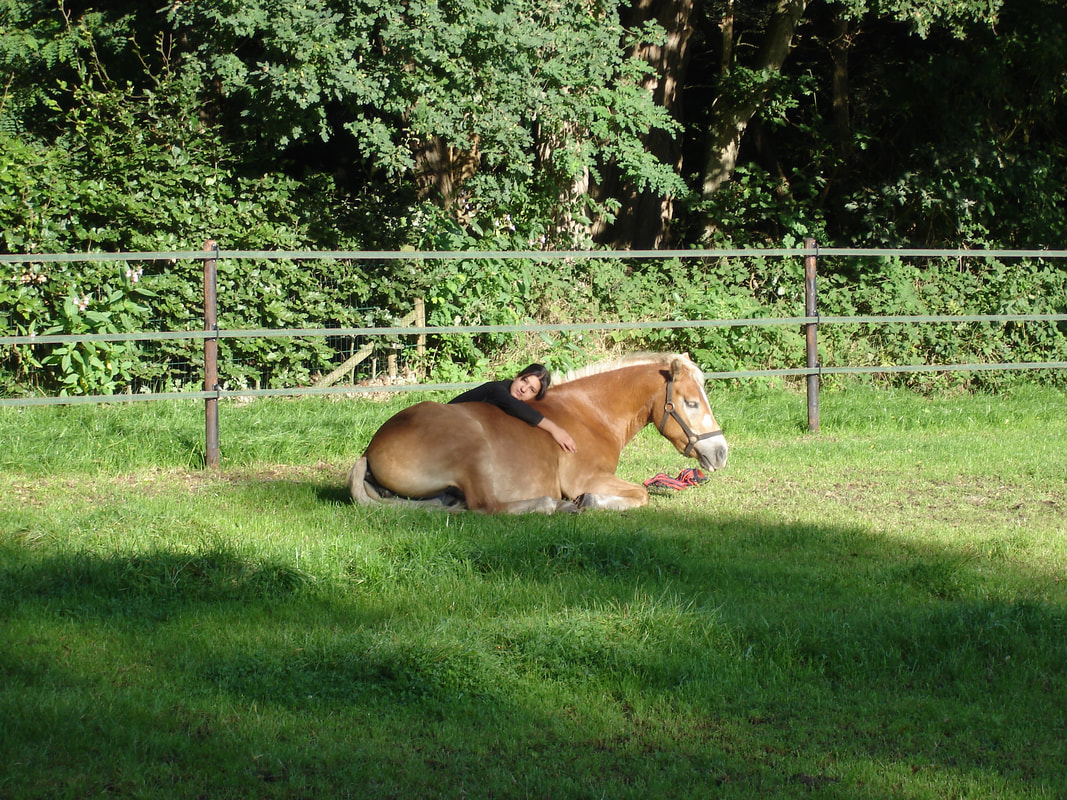
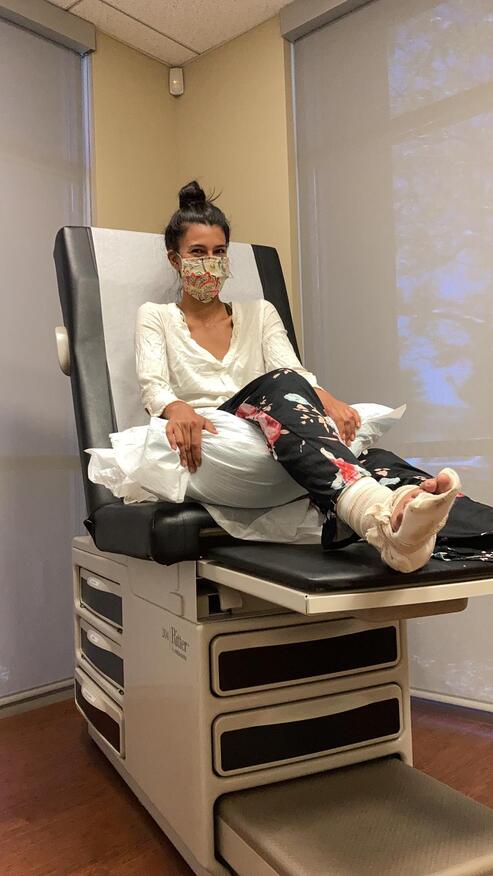
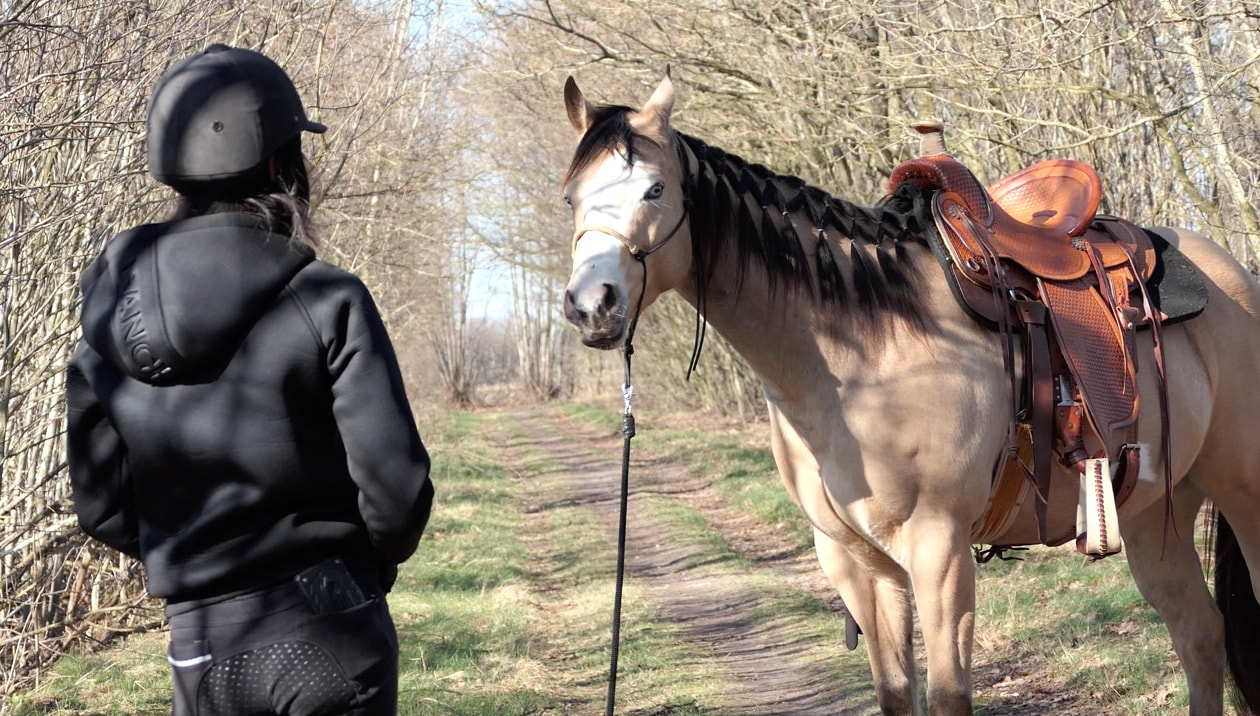
 RSS Feed
RSS Feed
